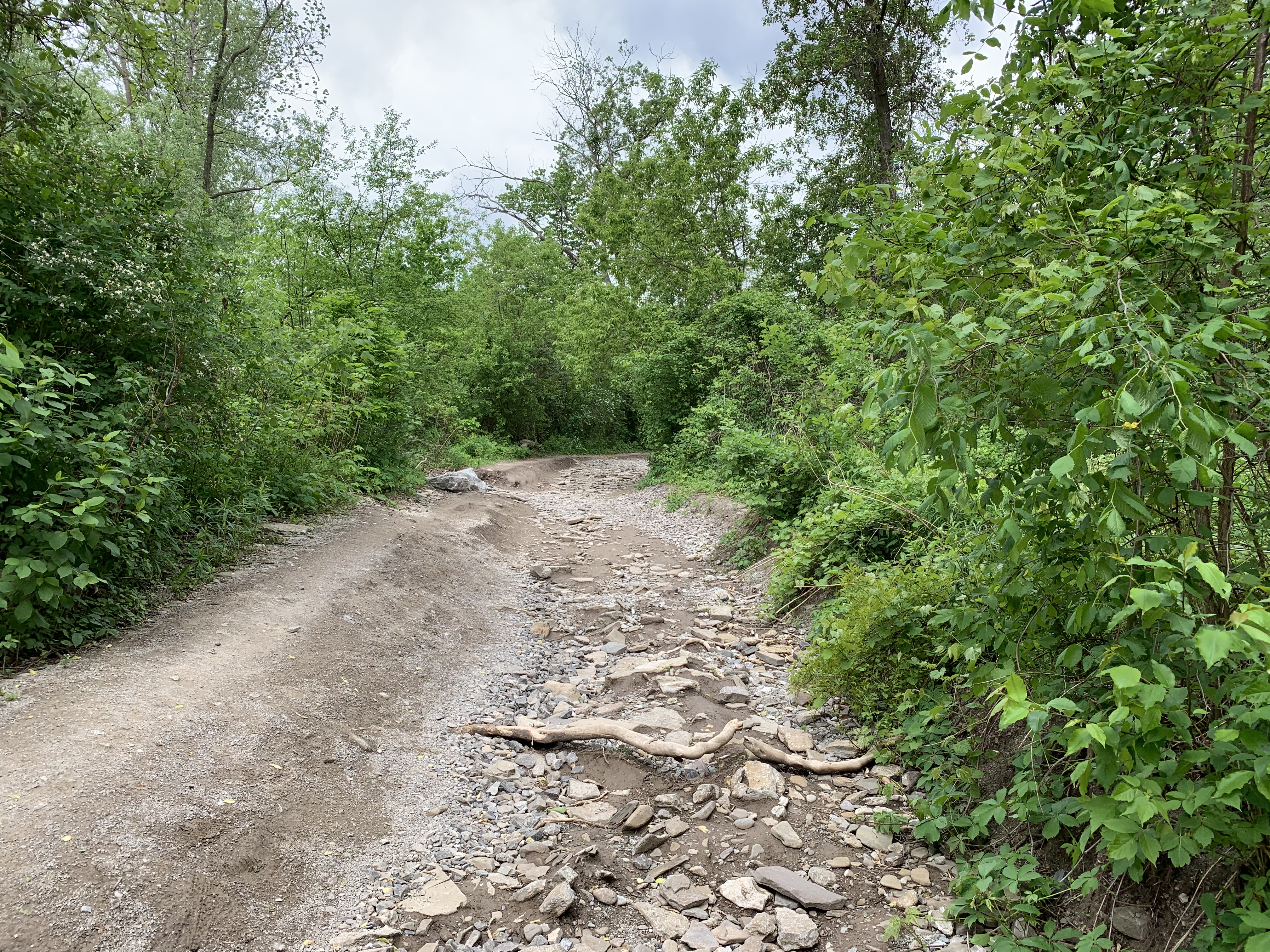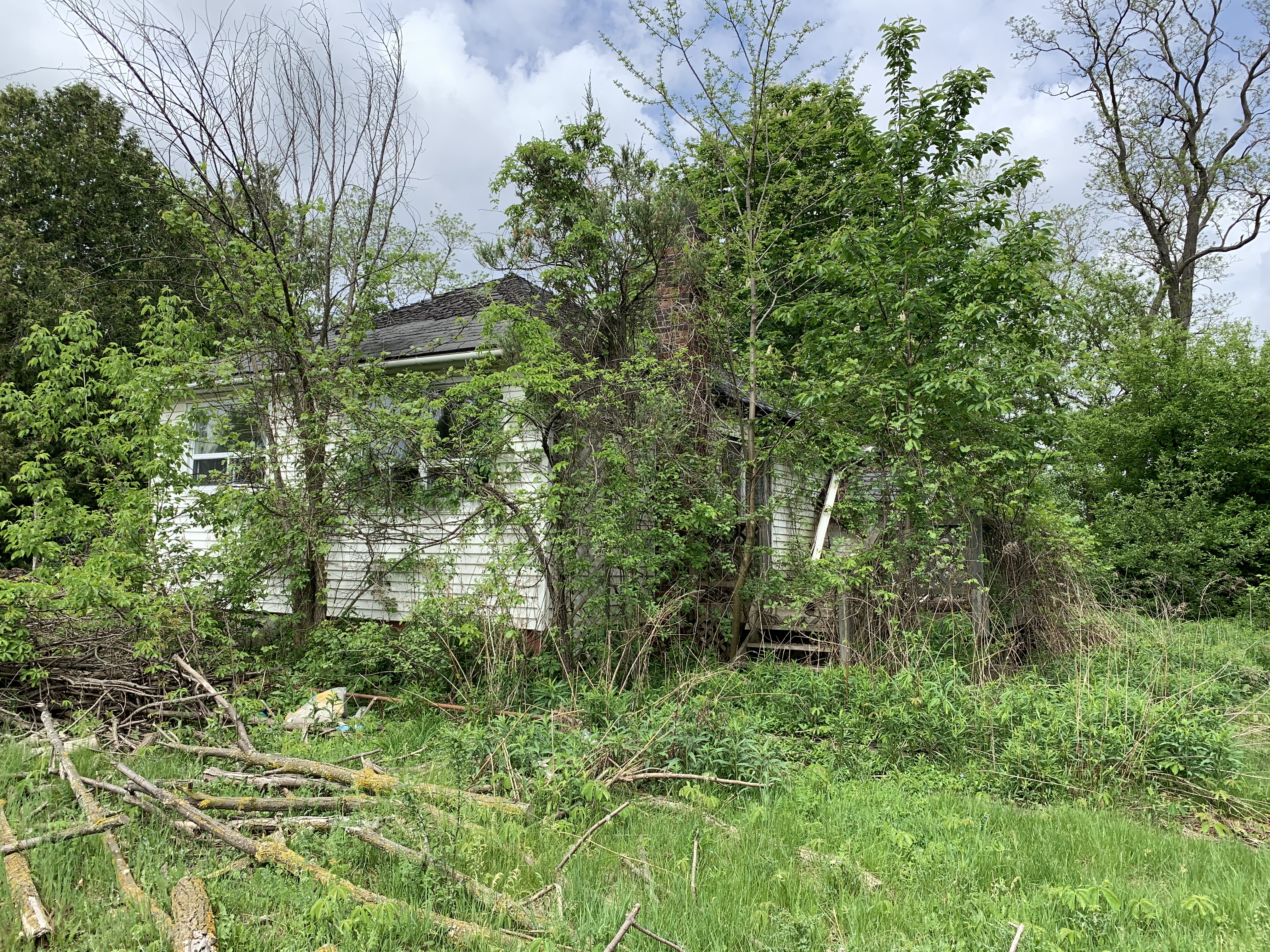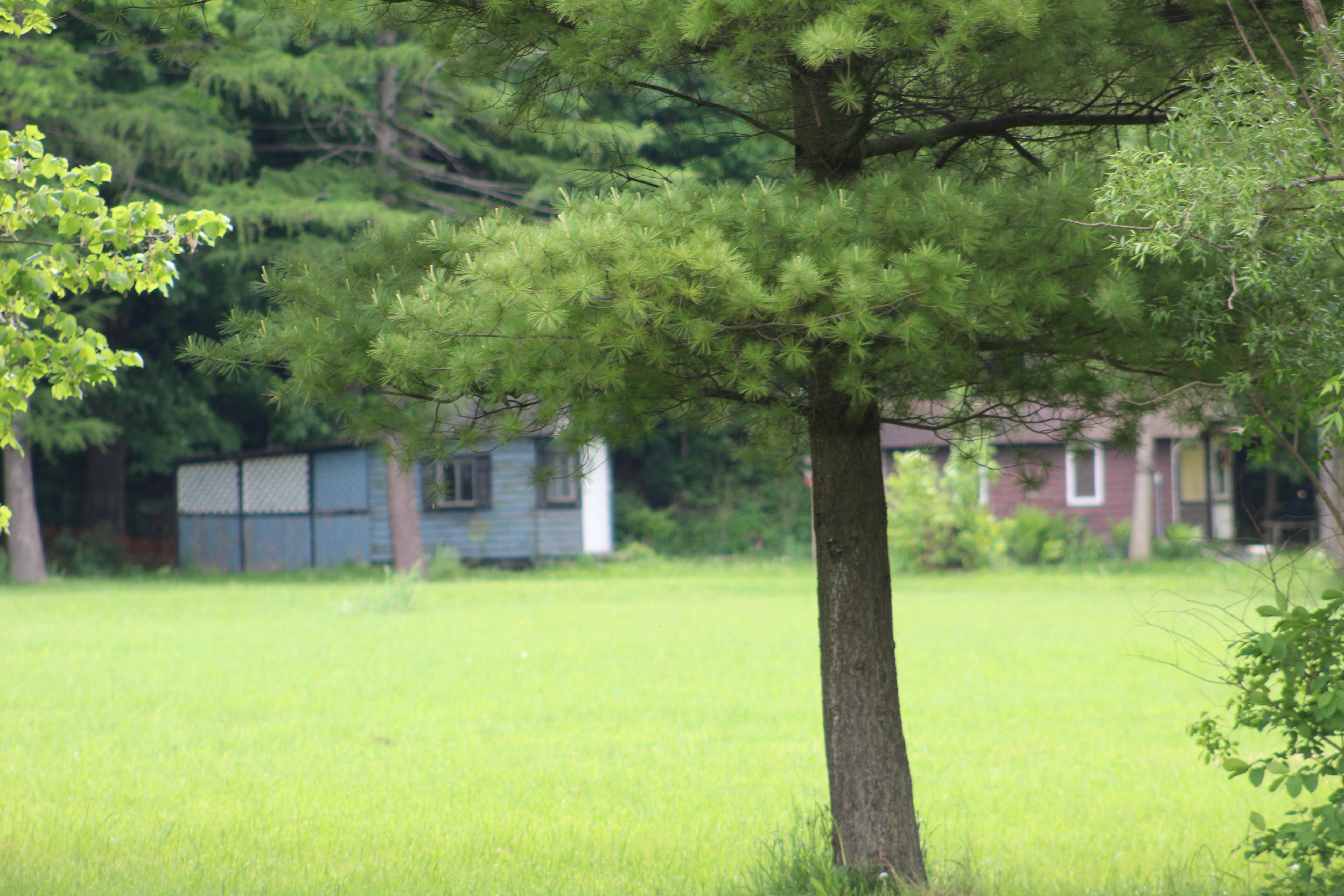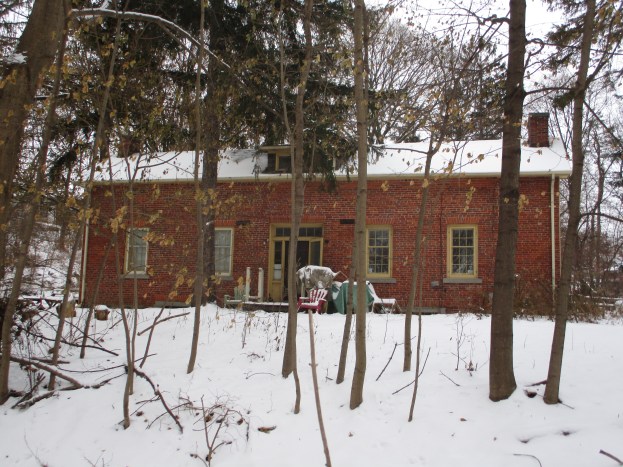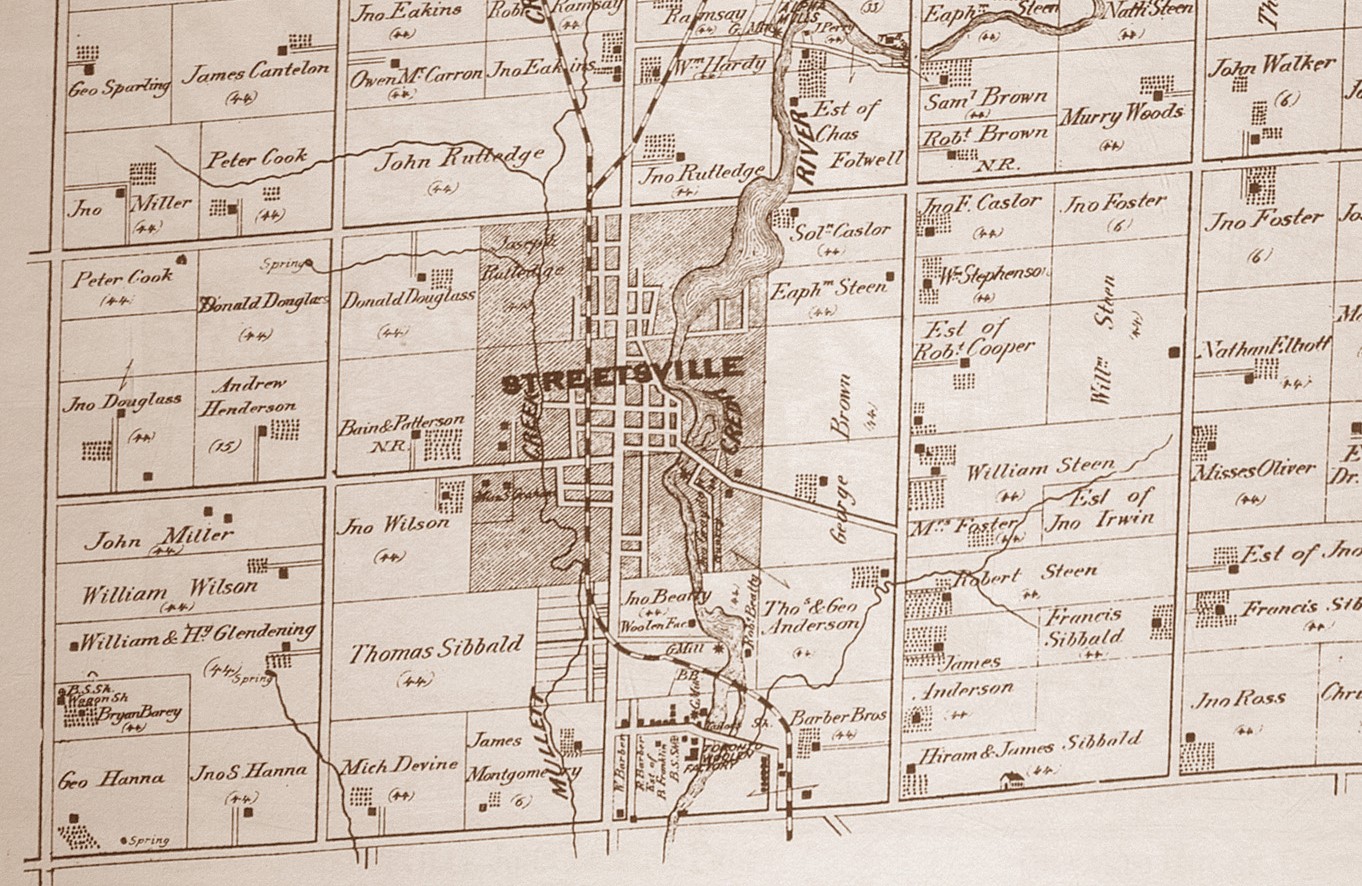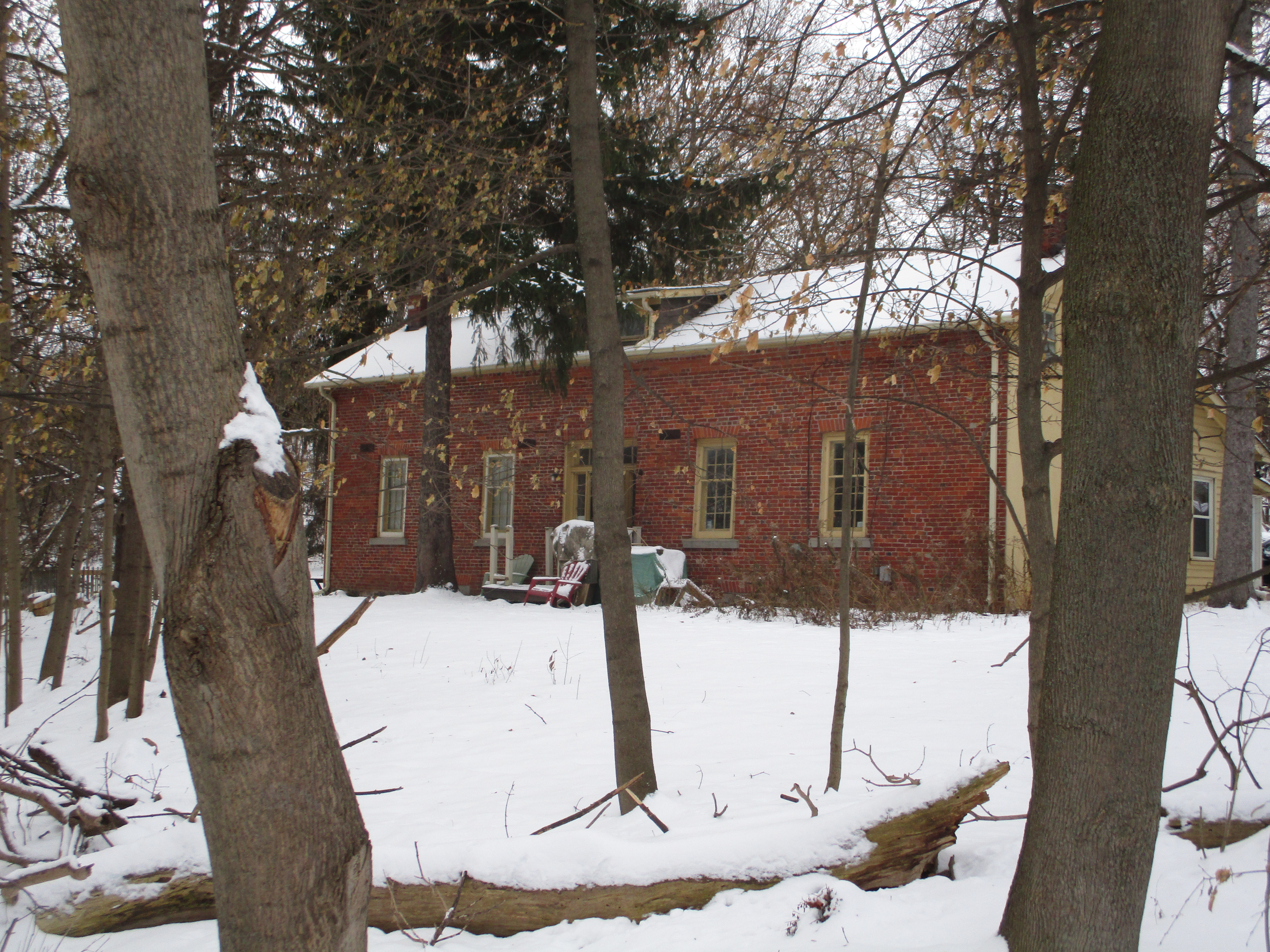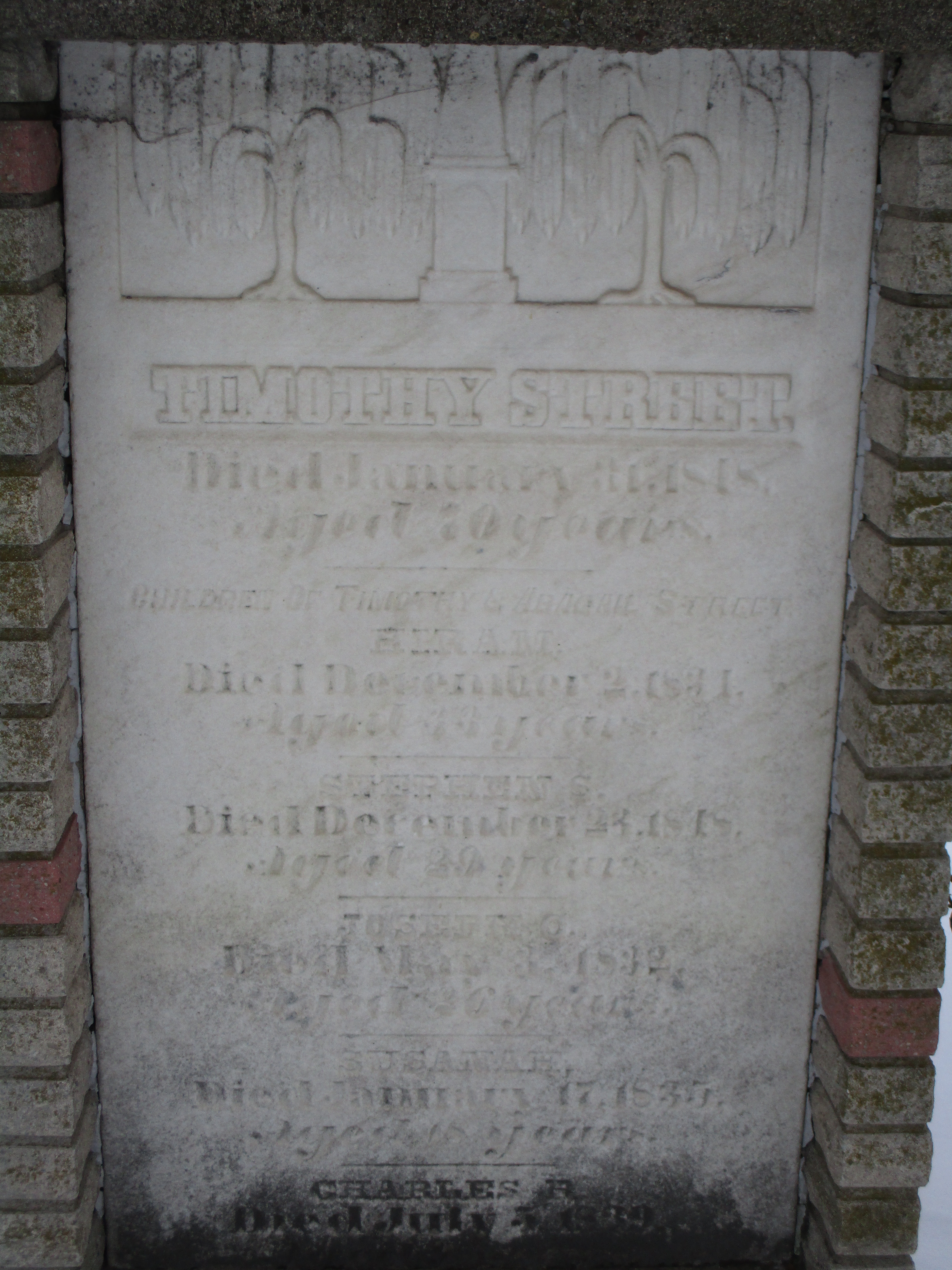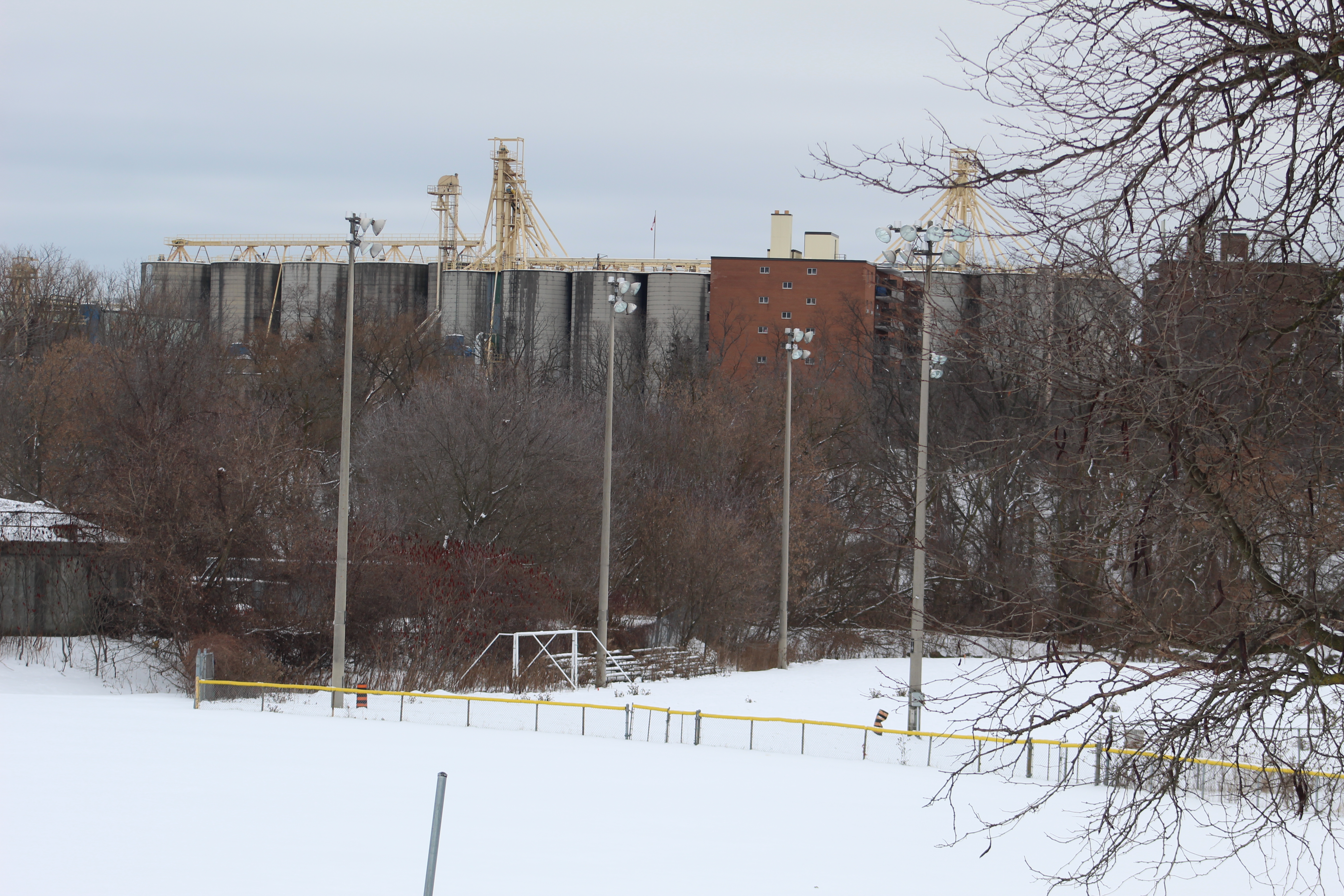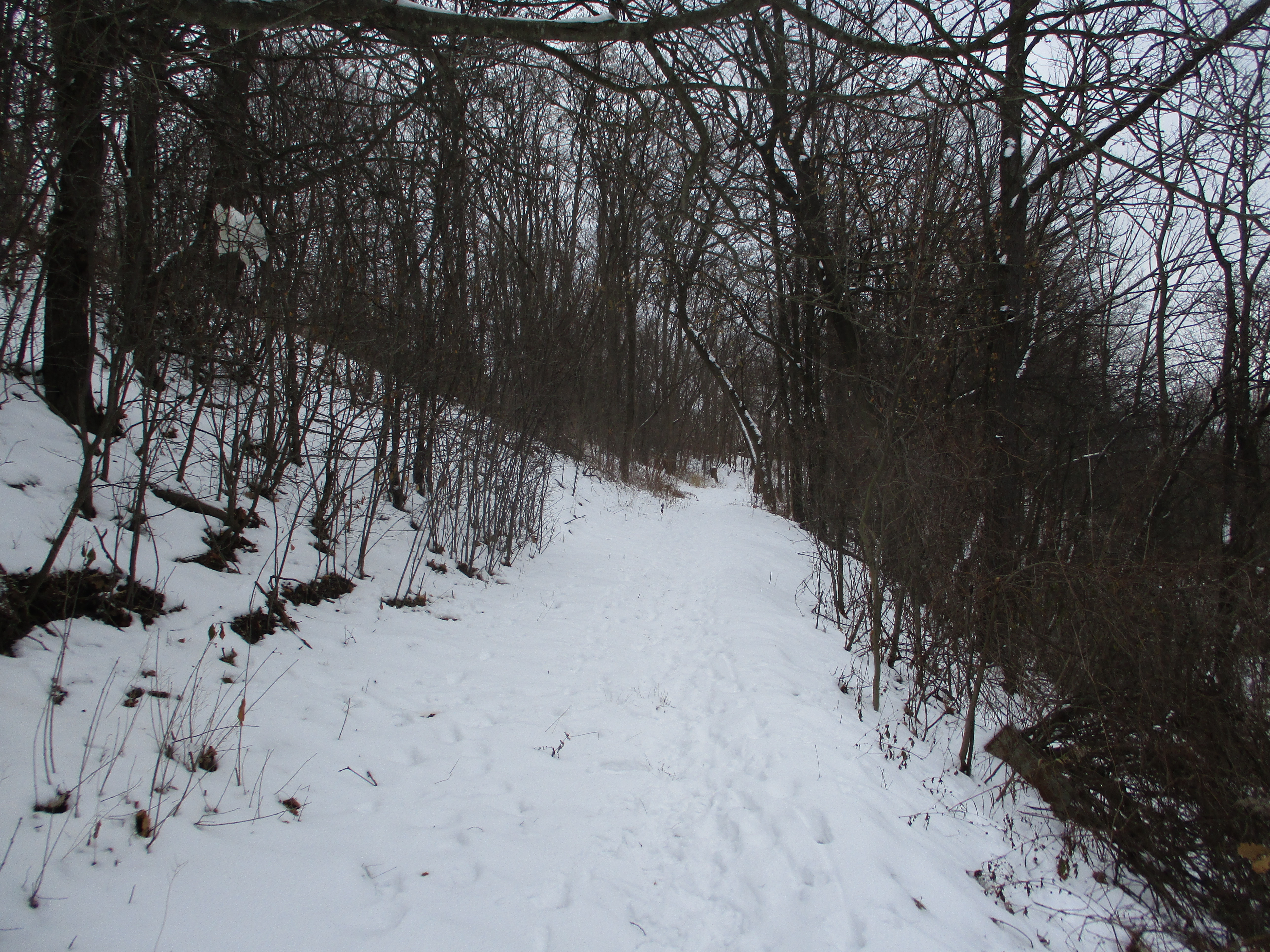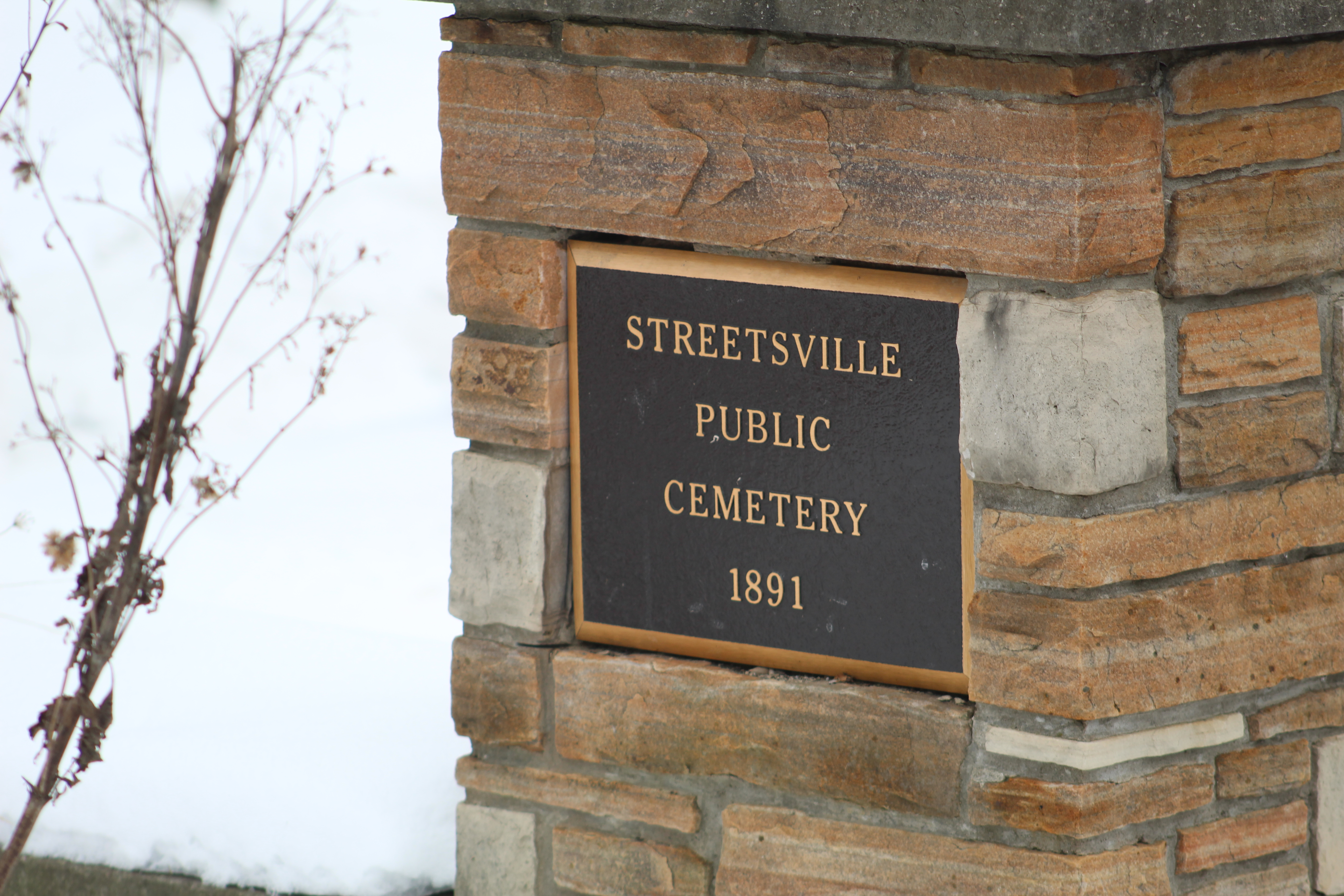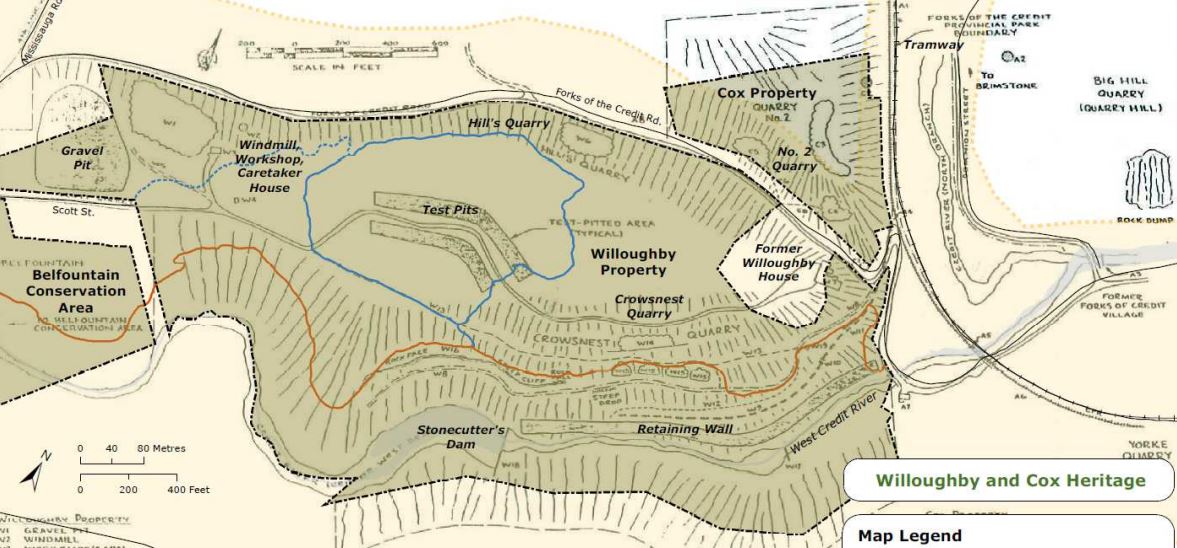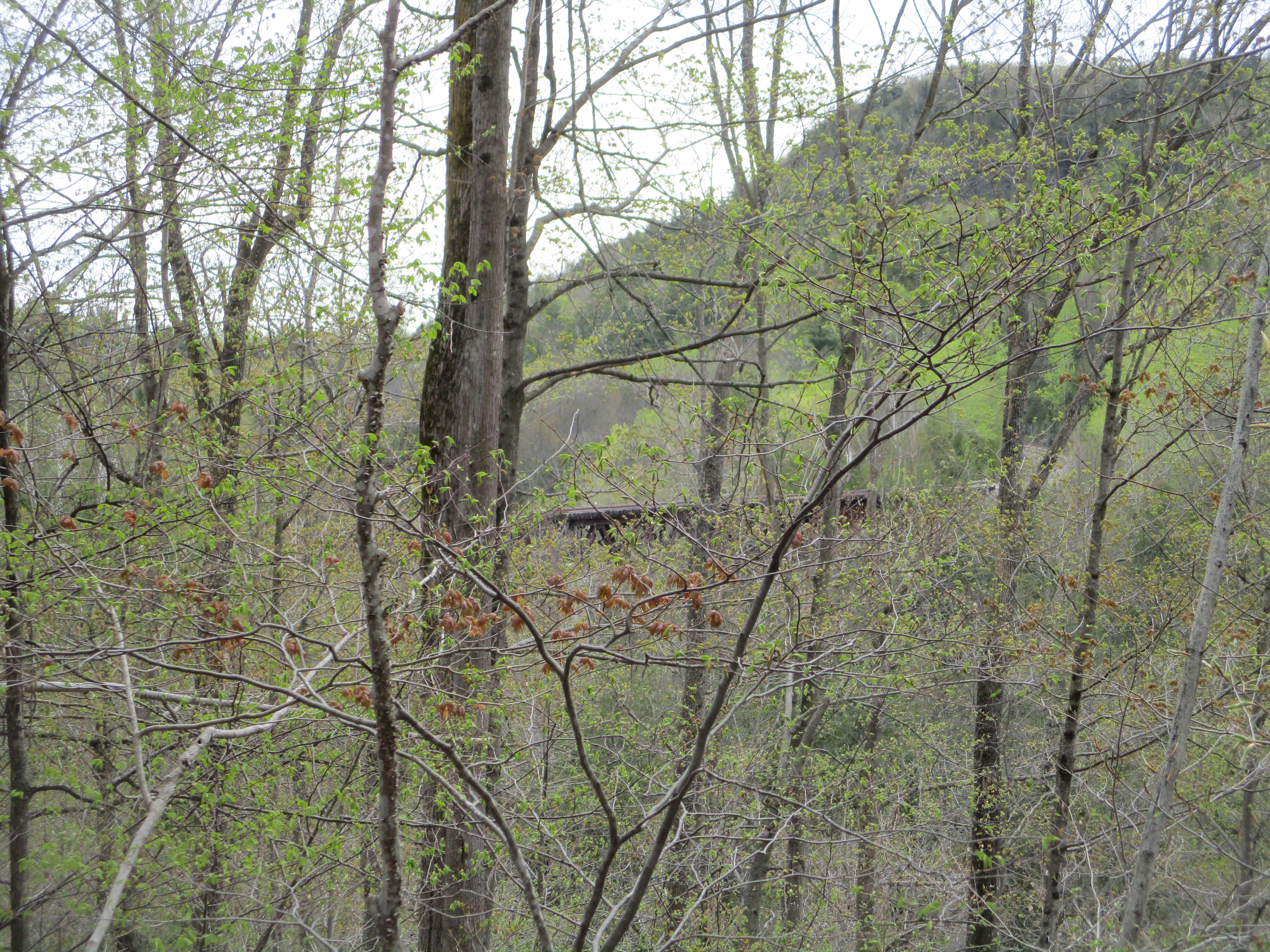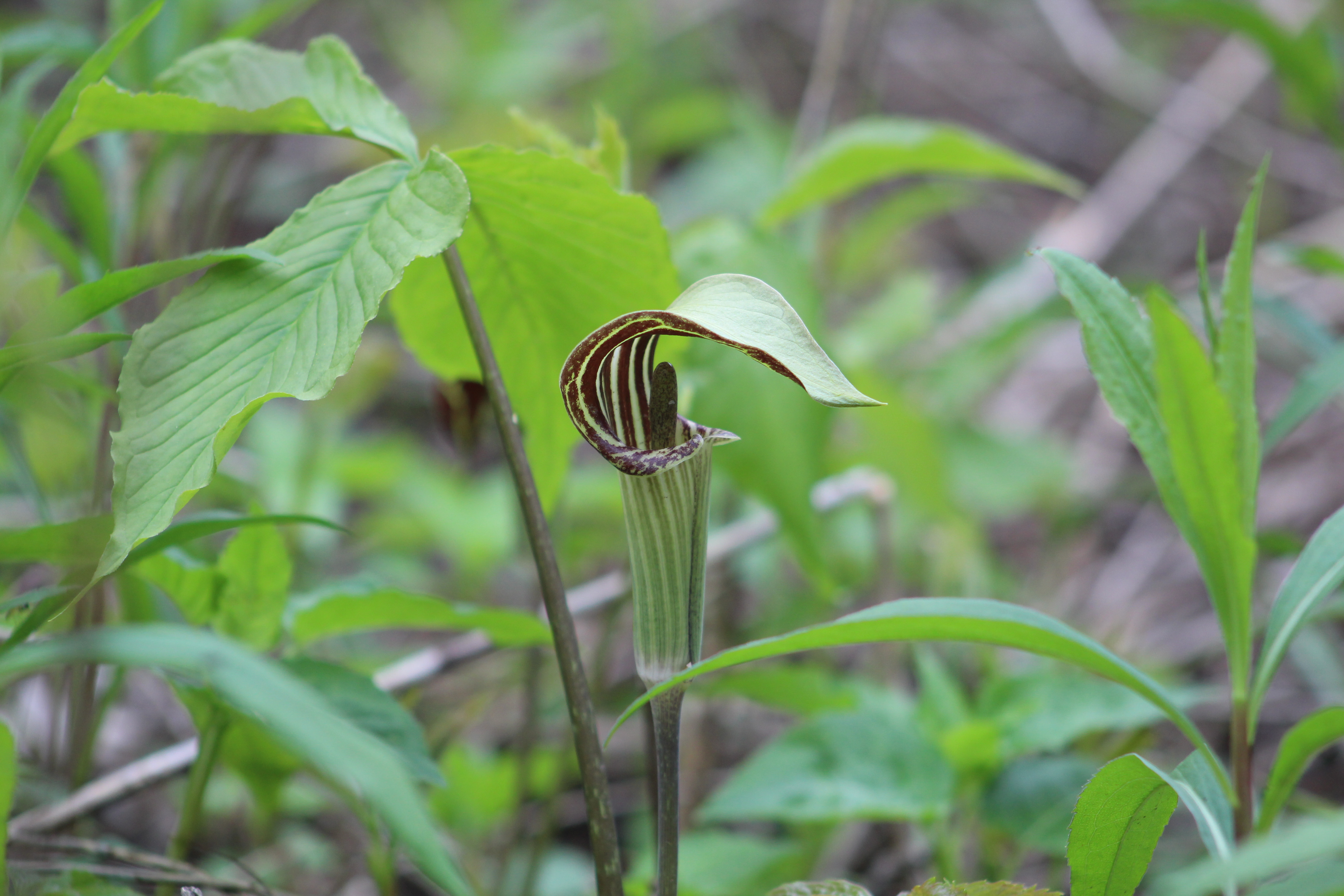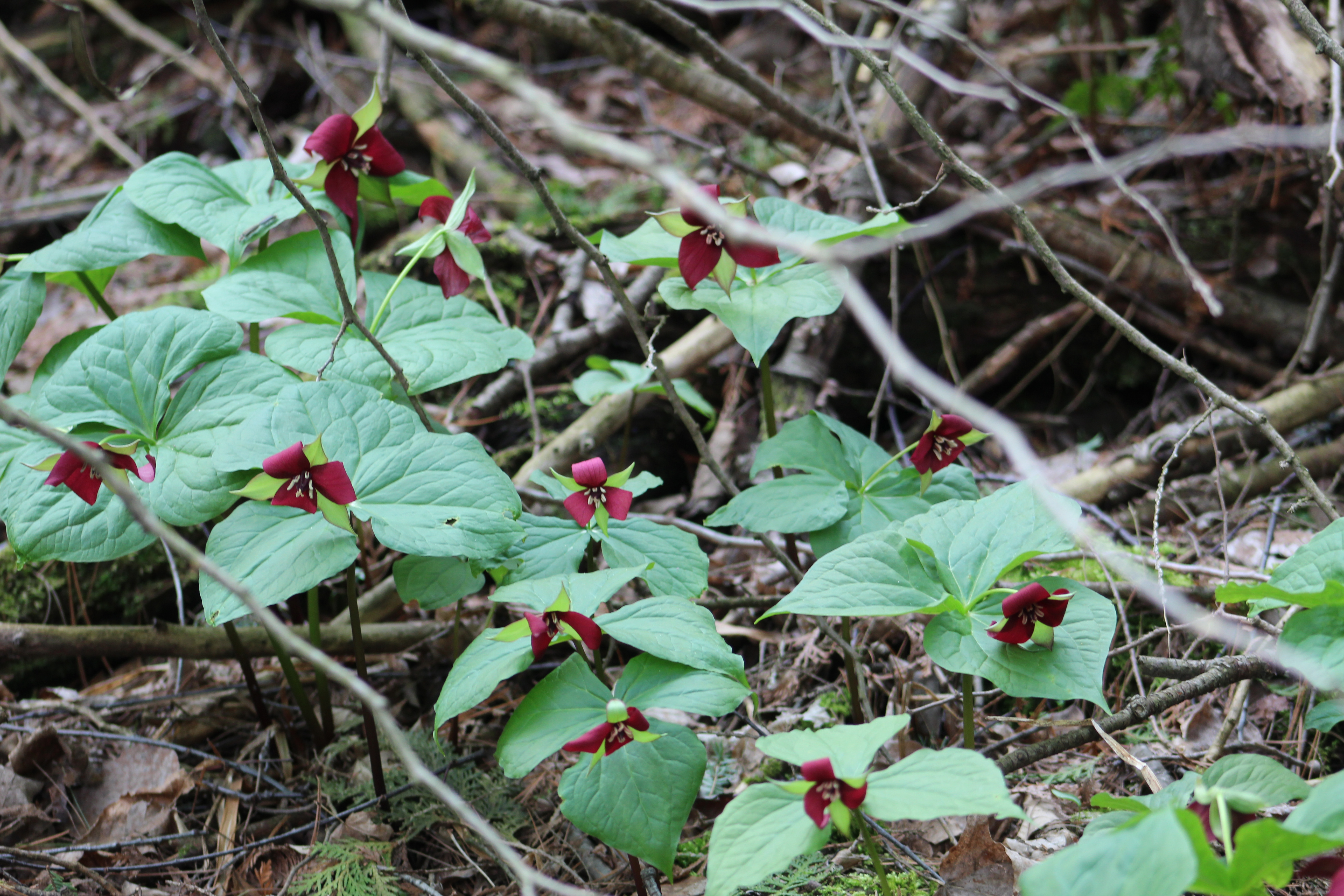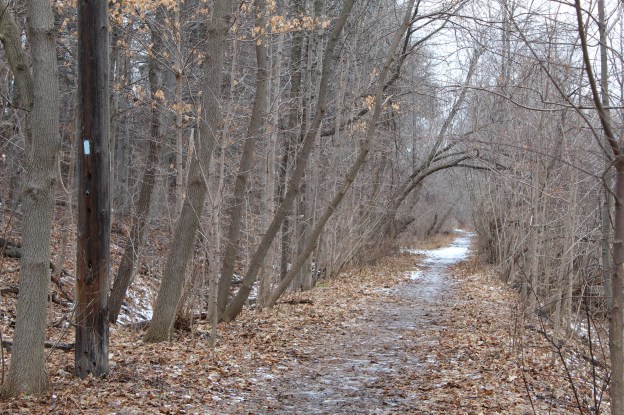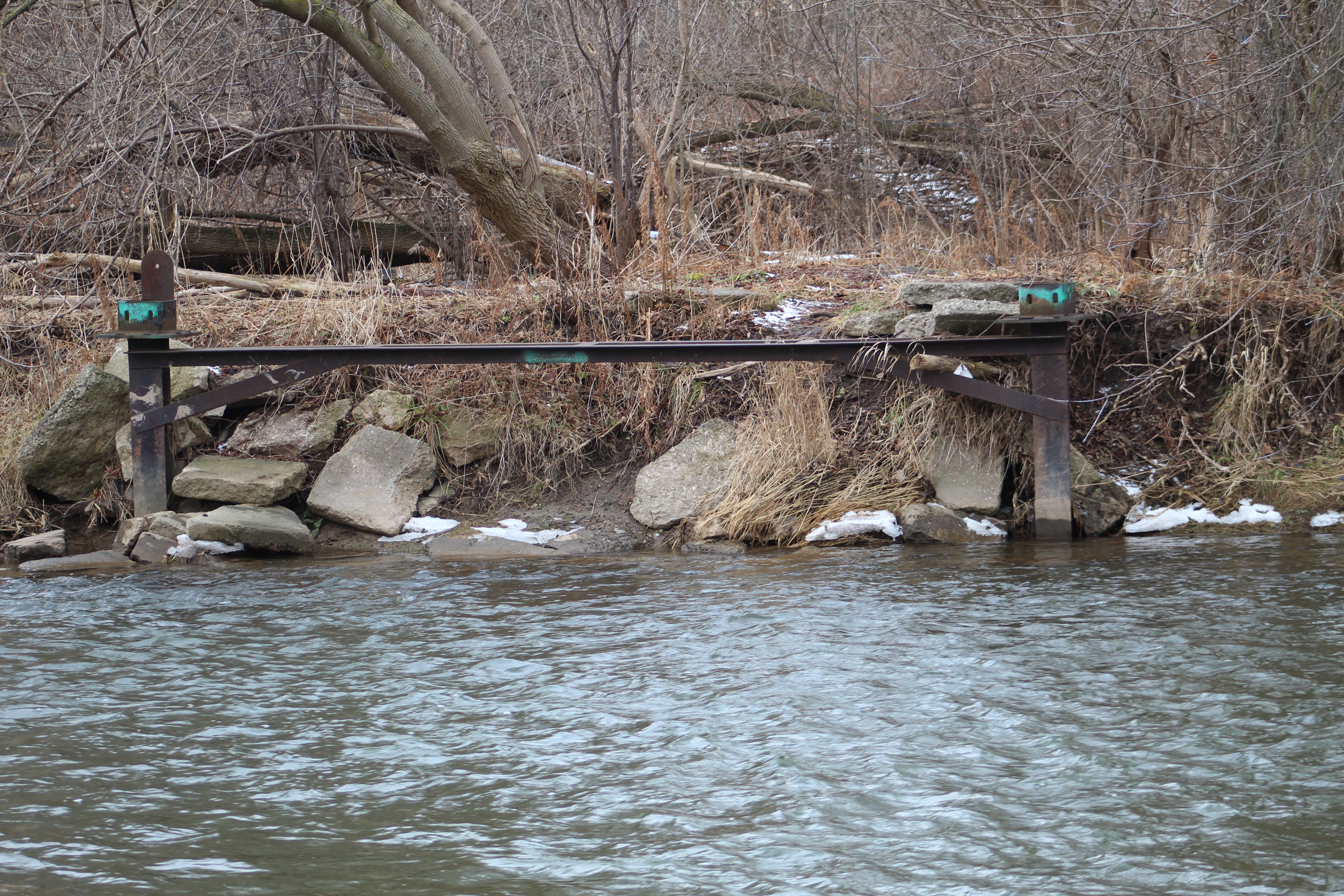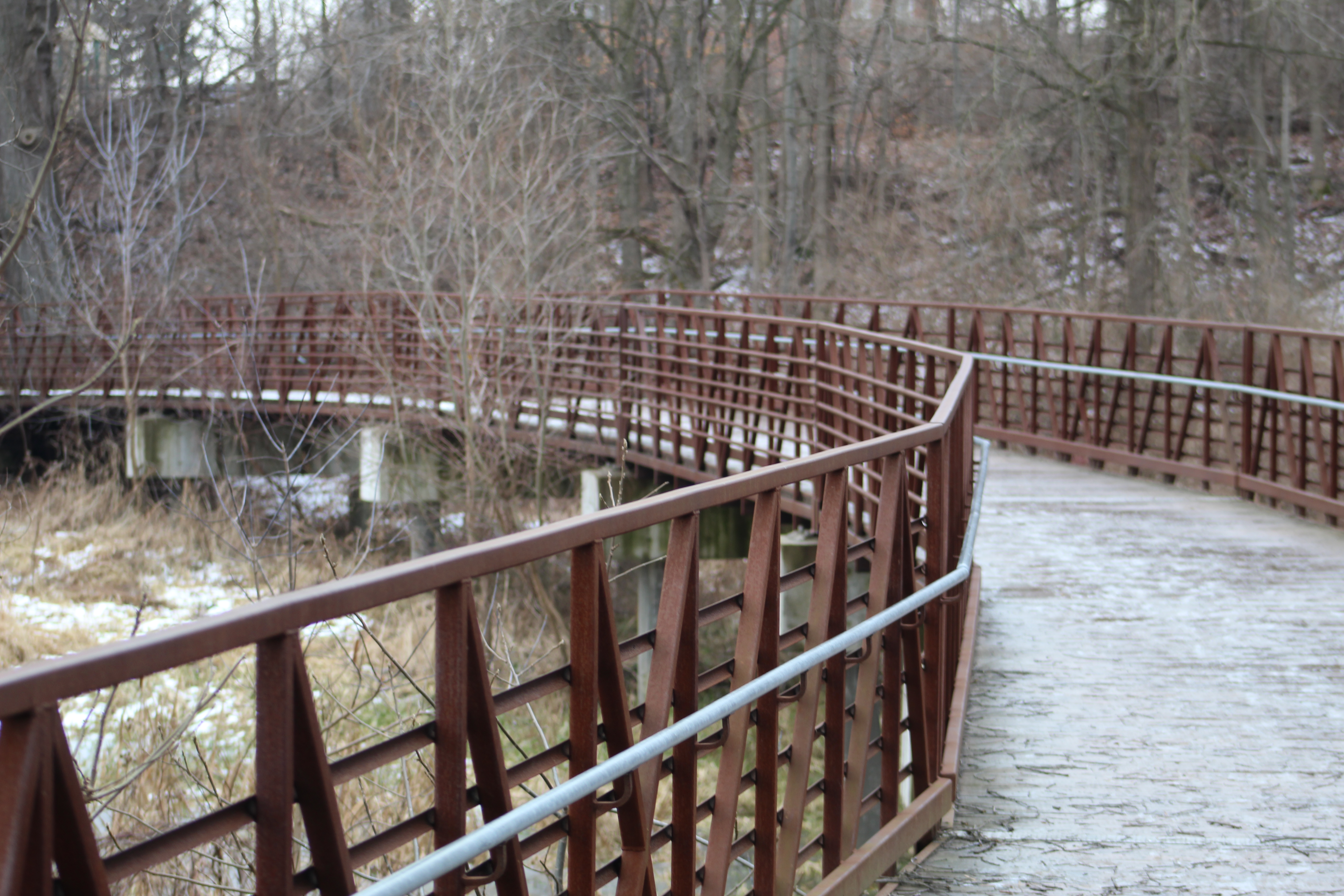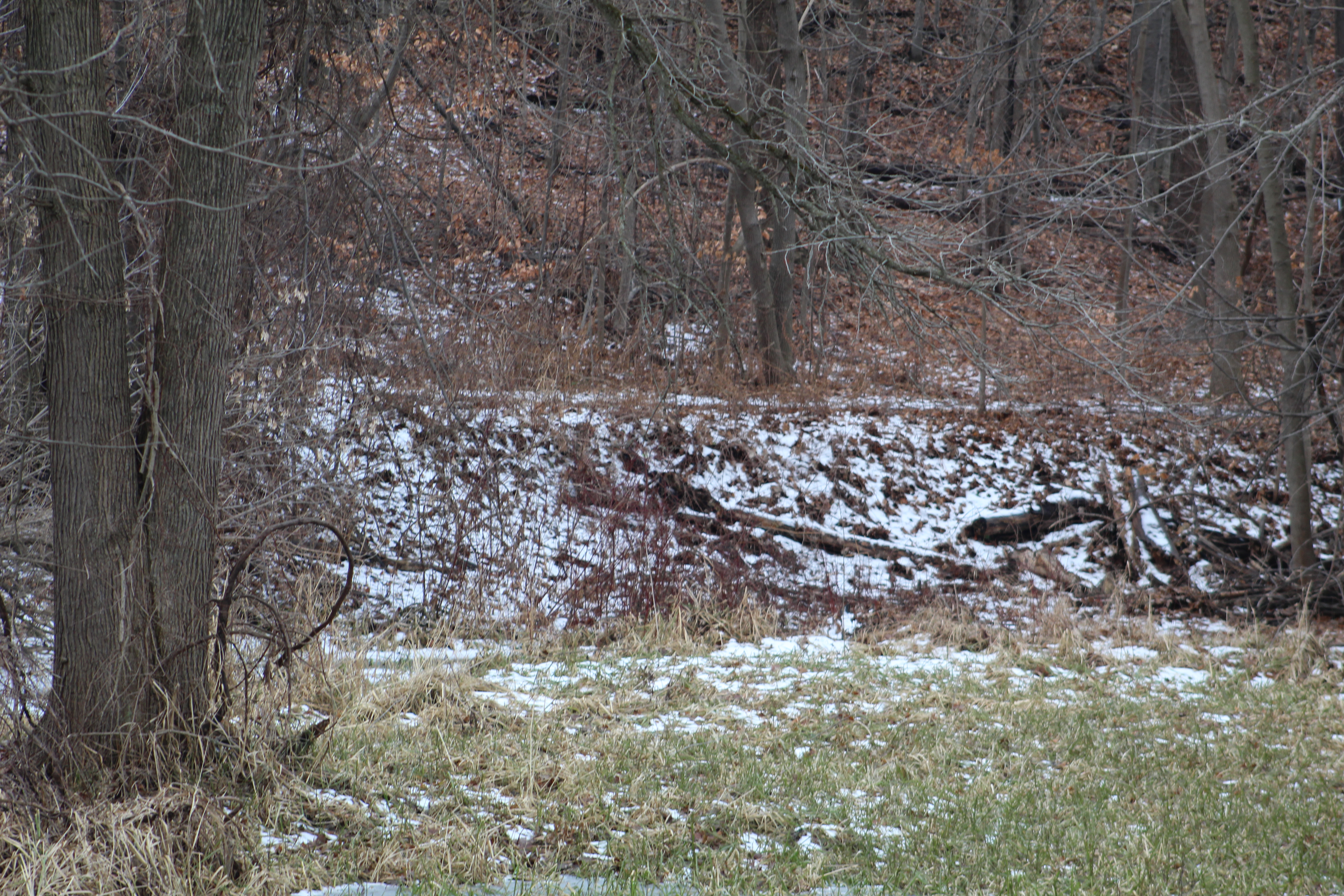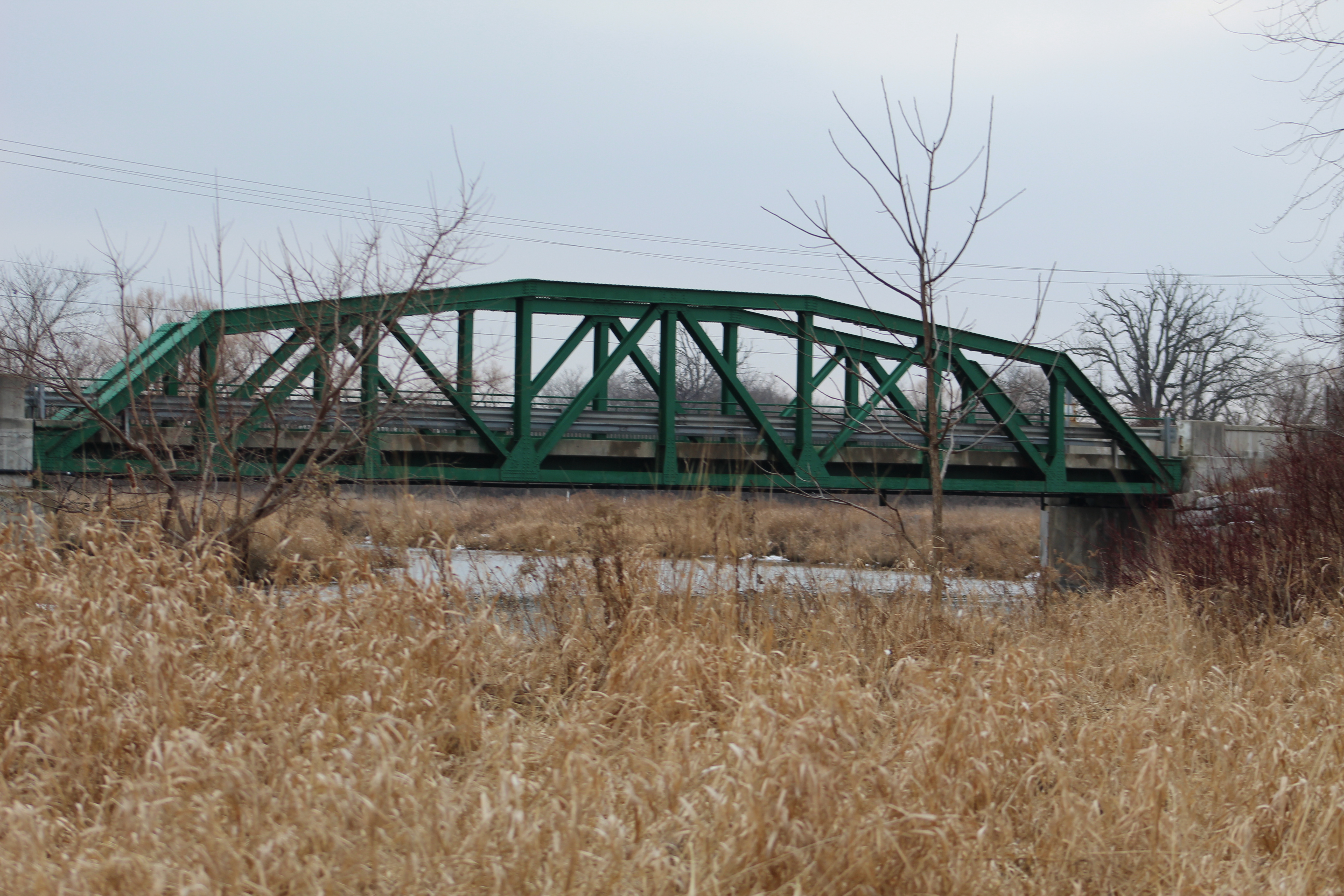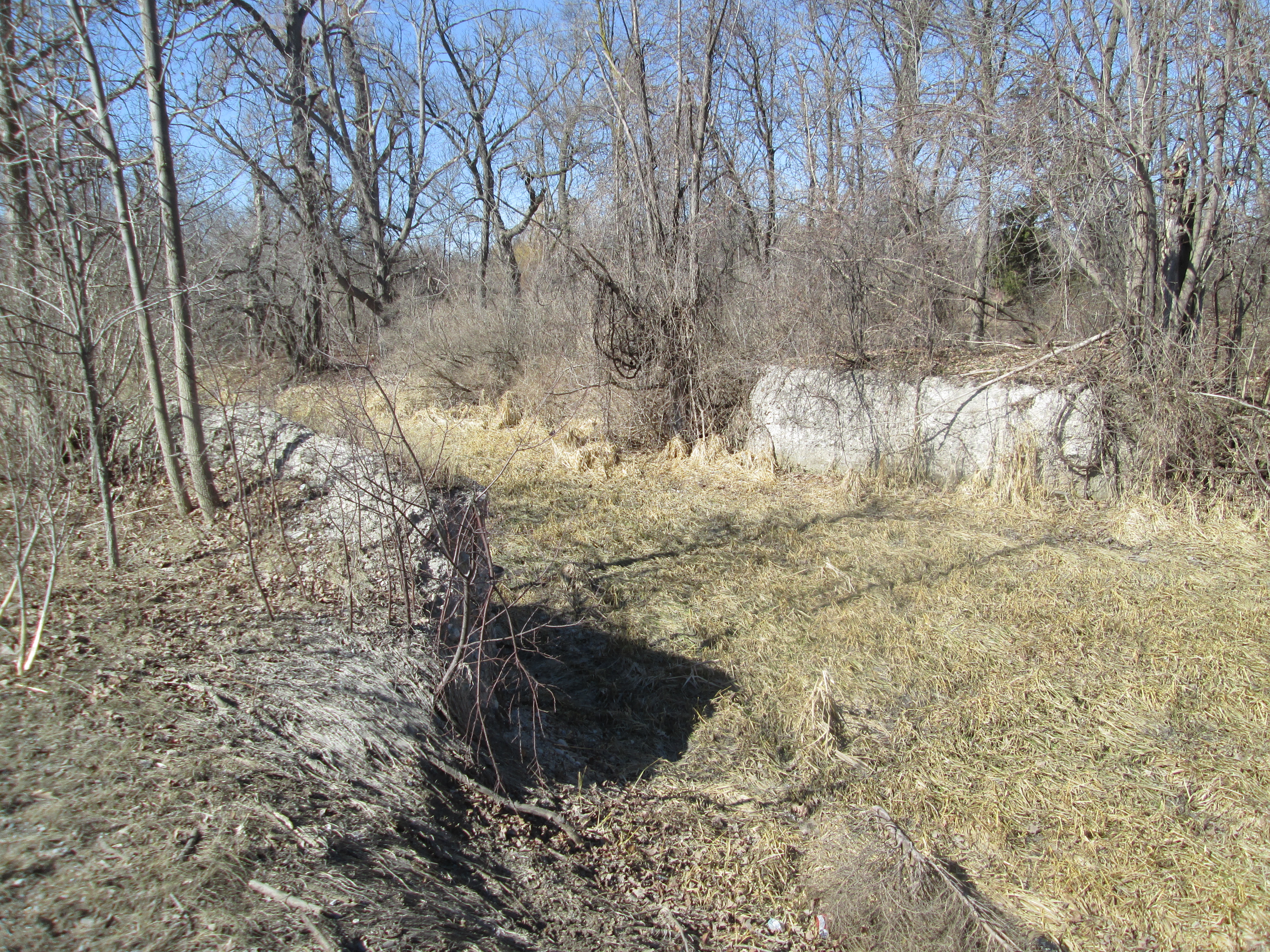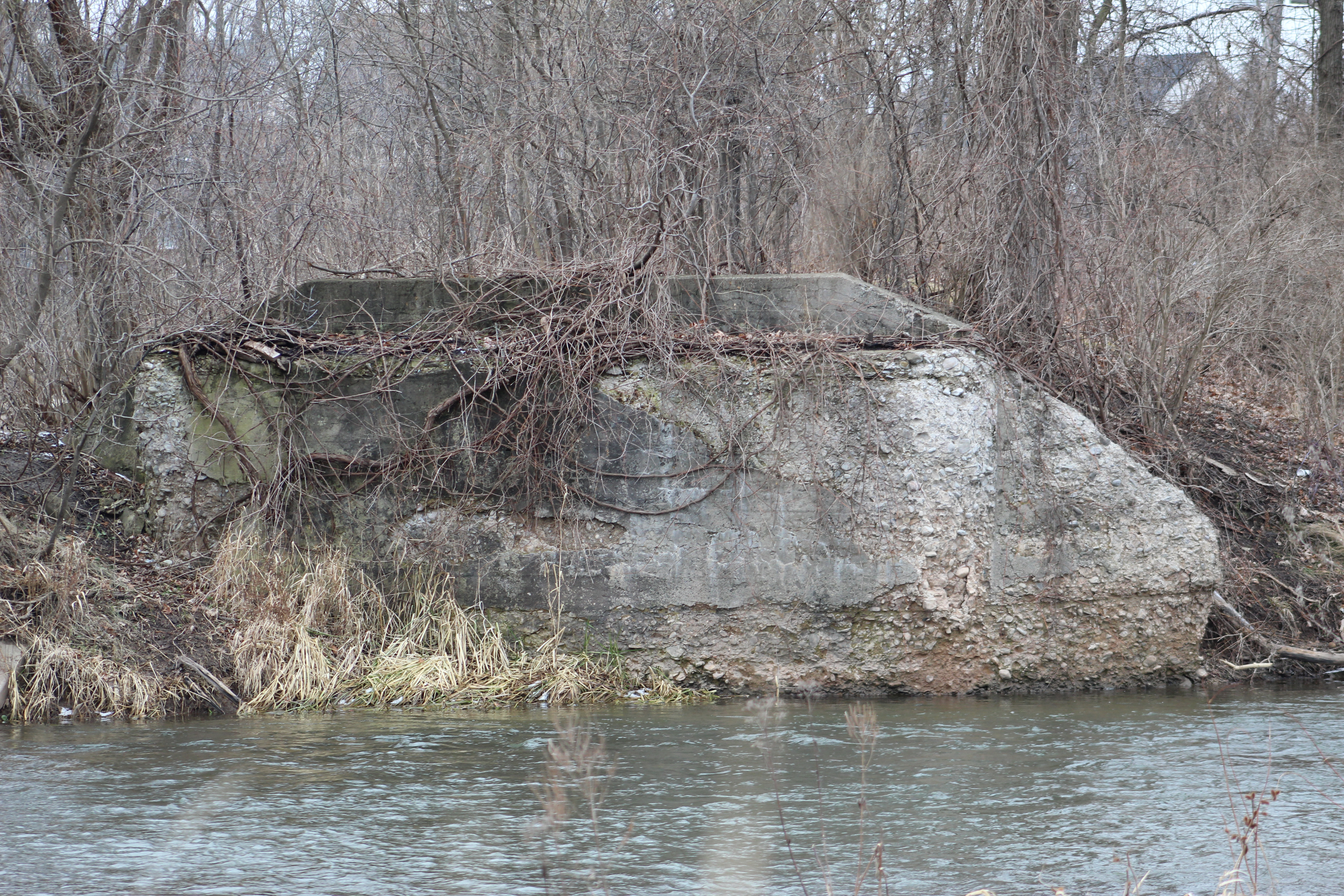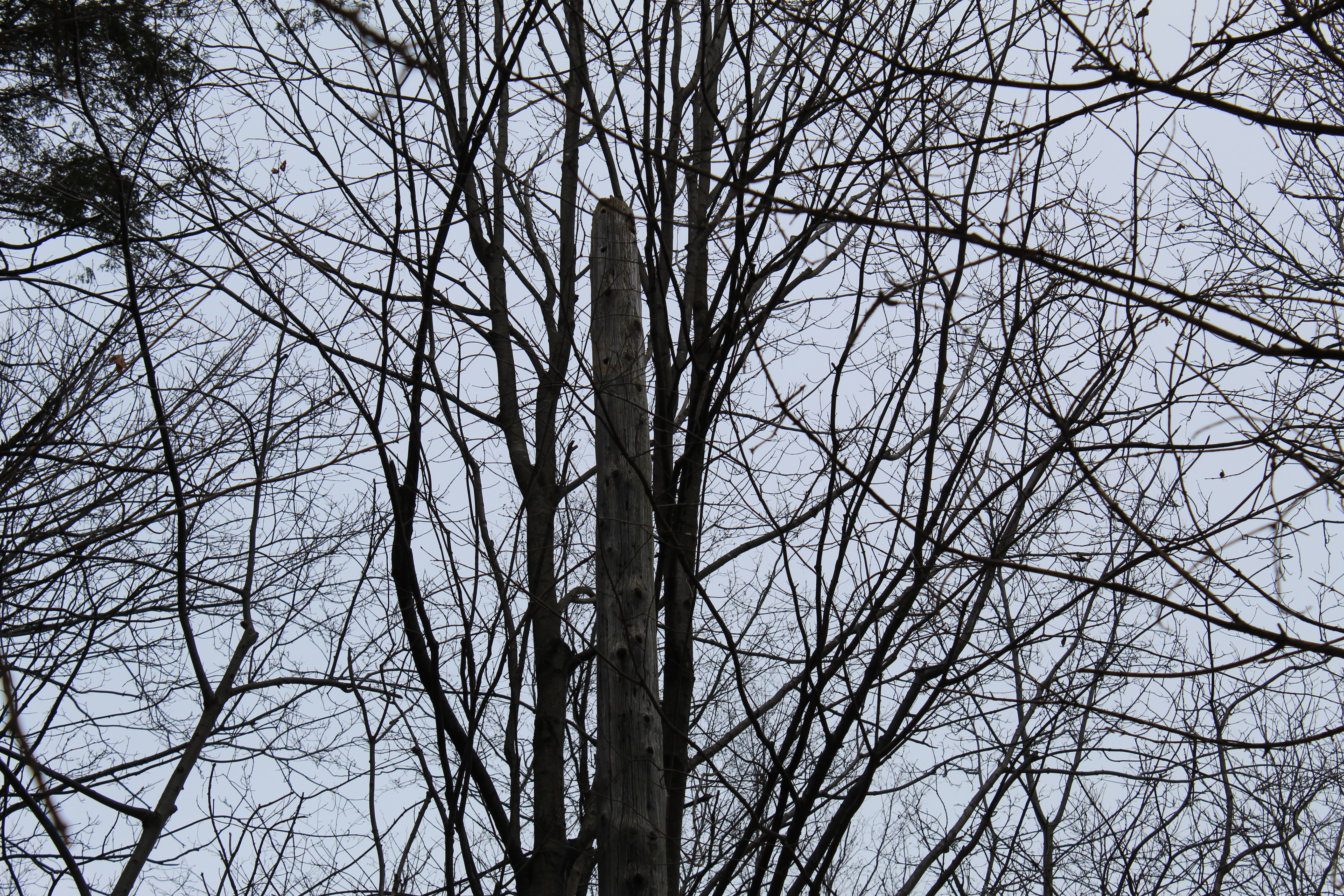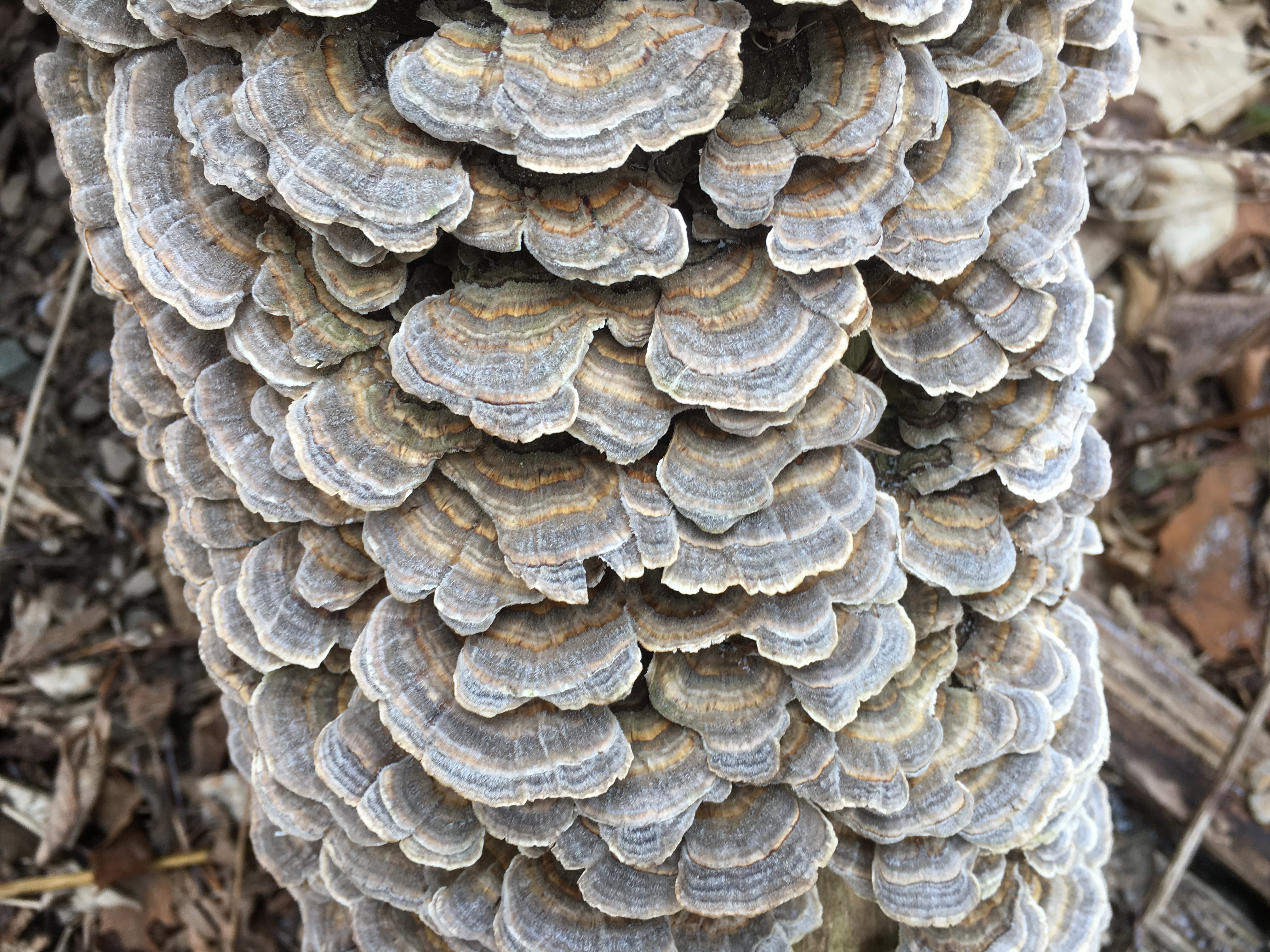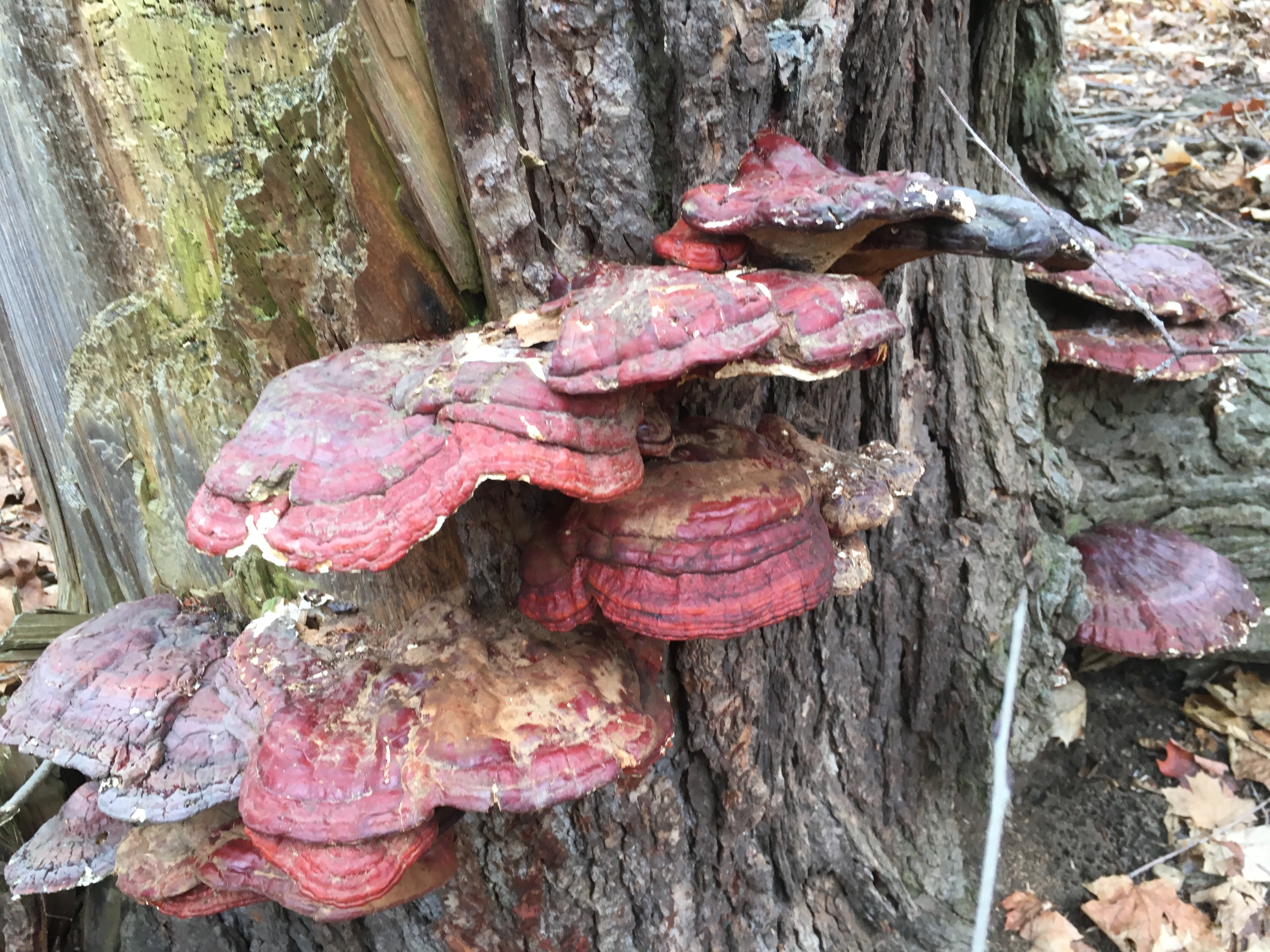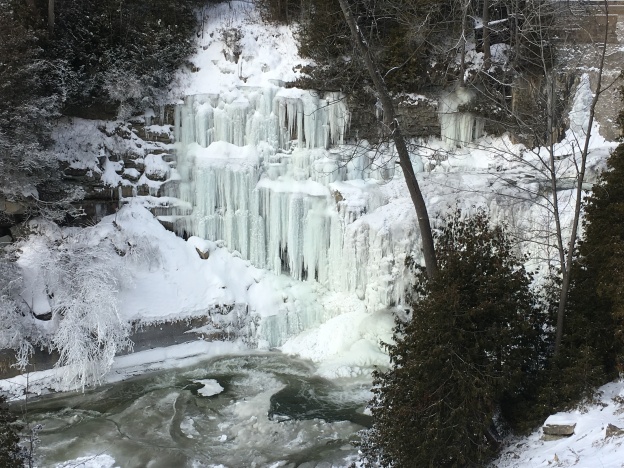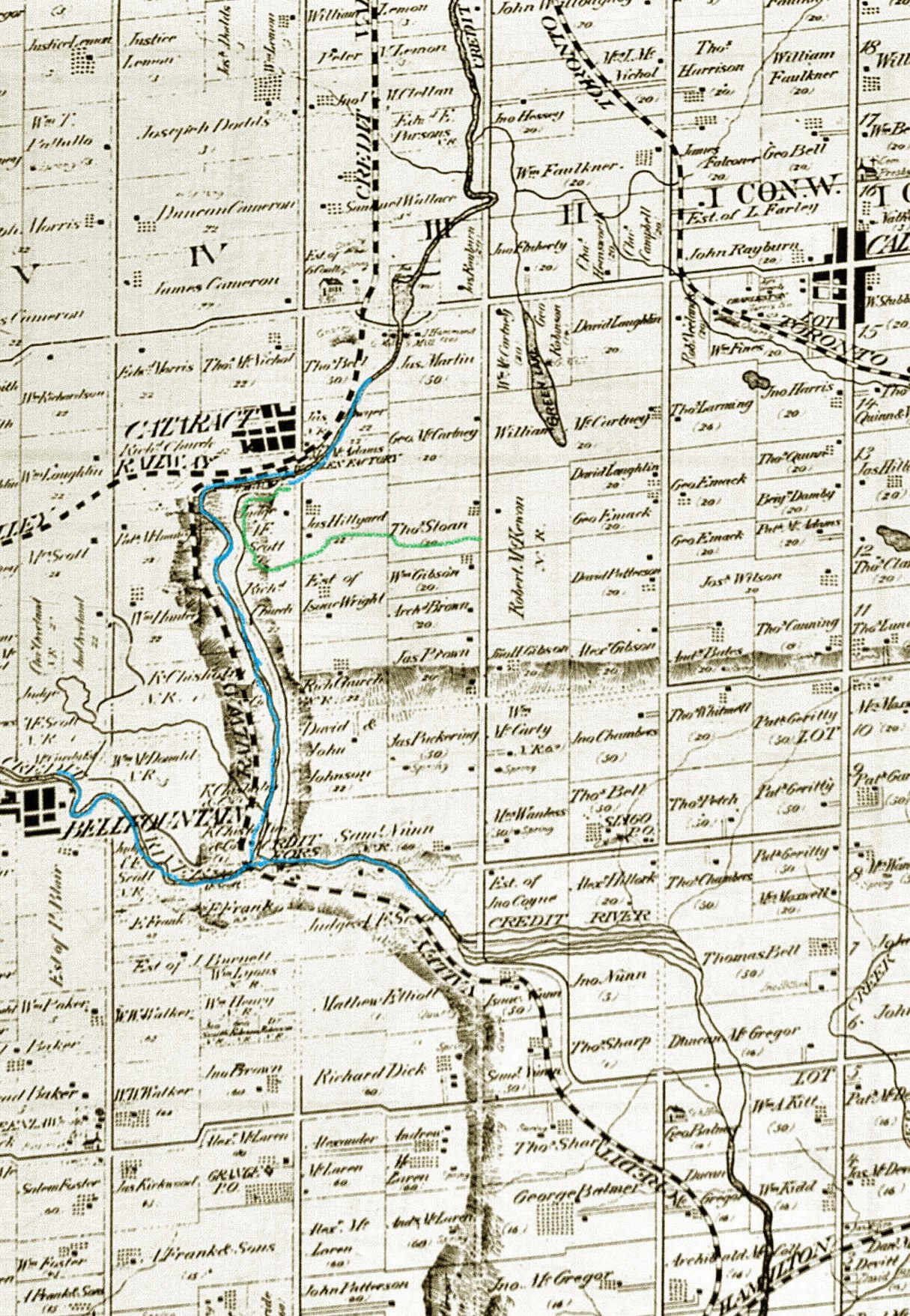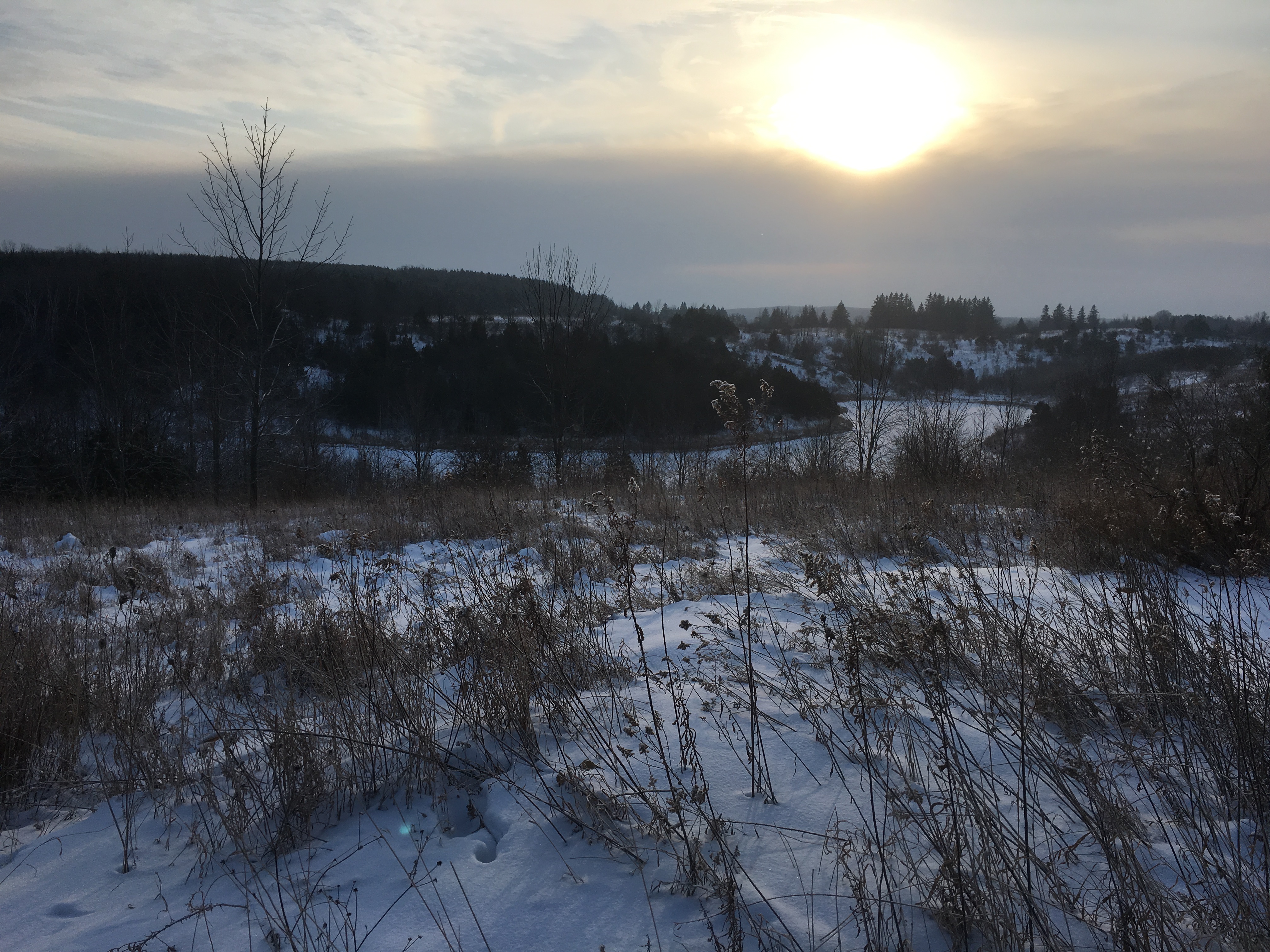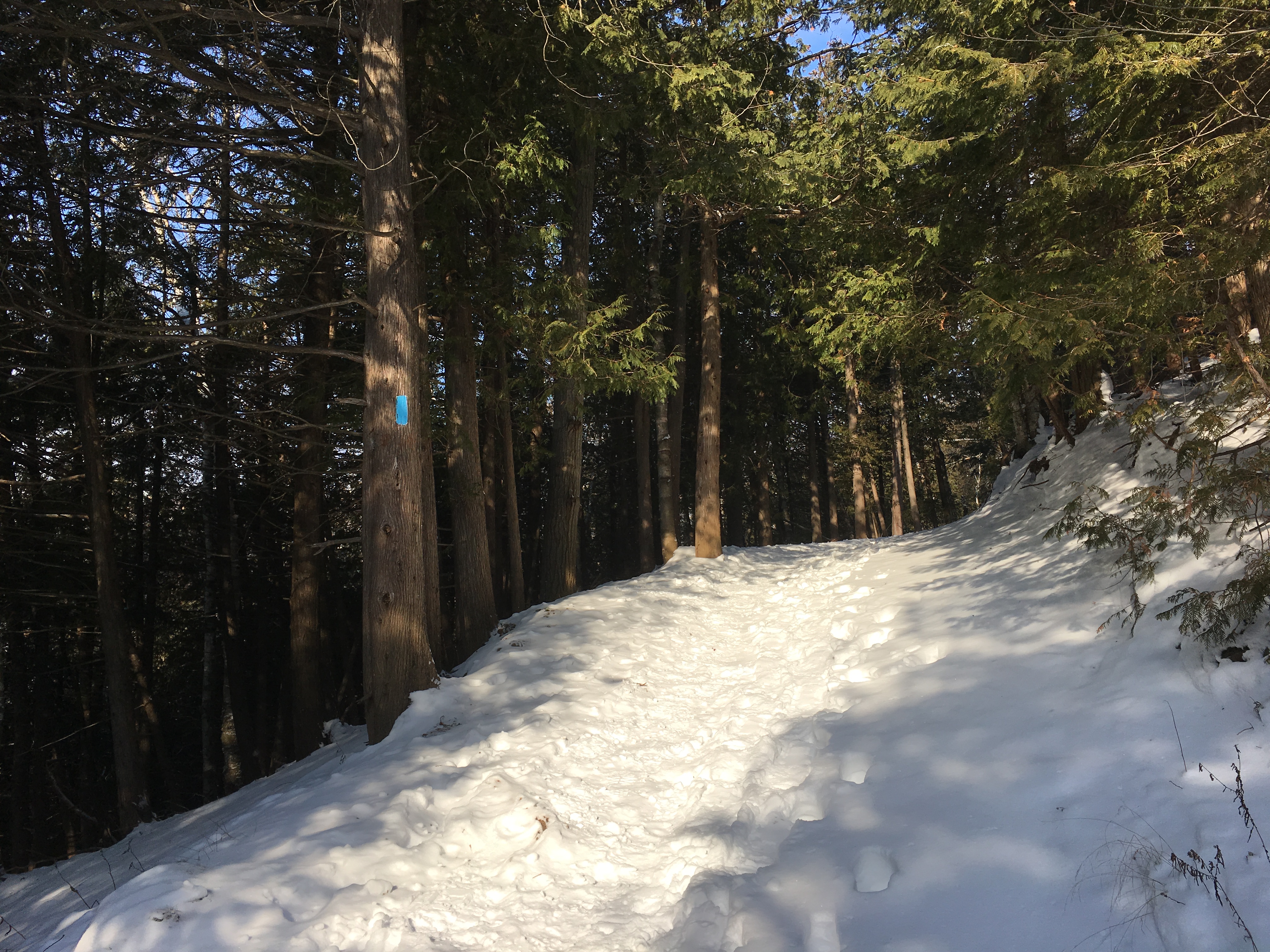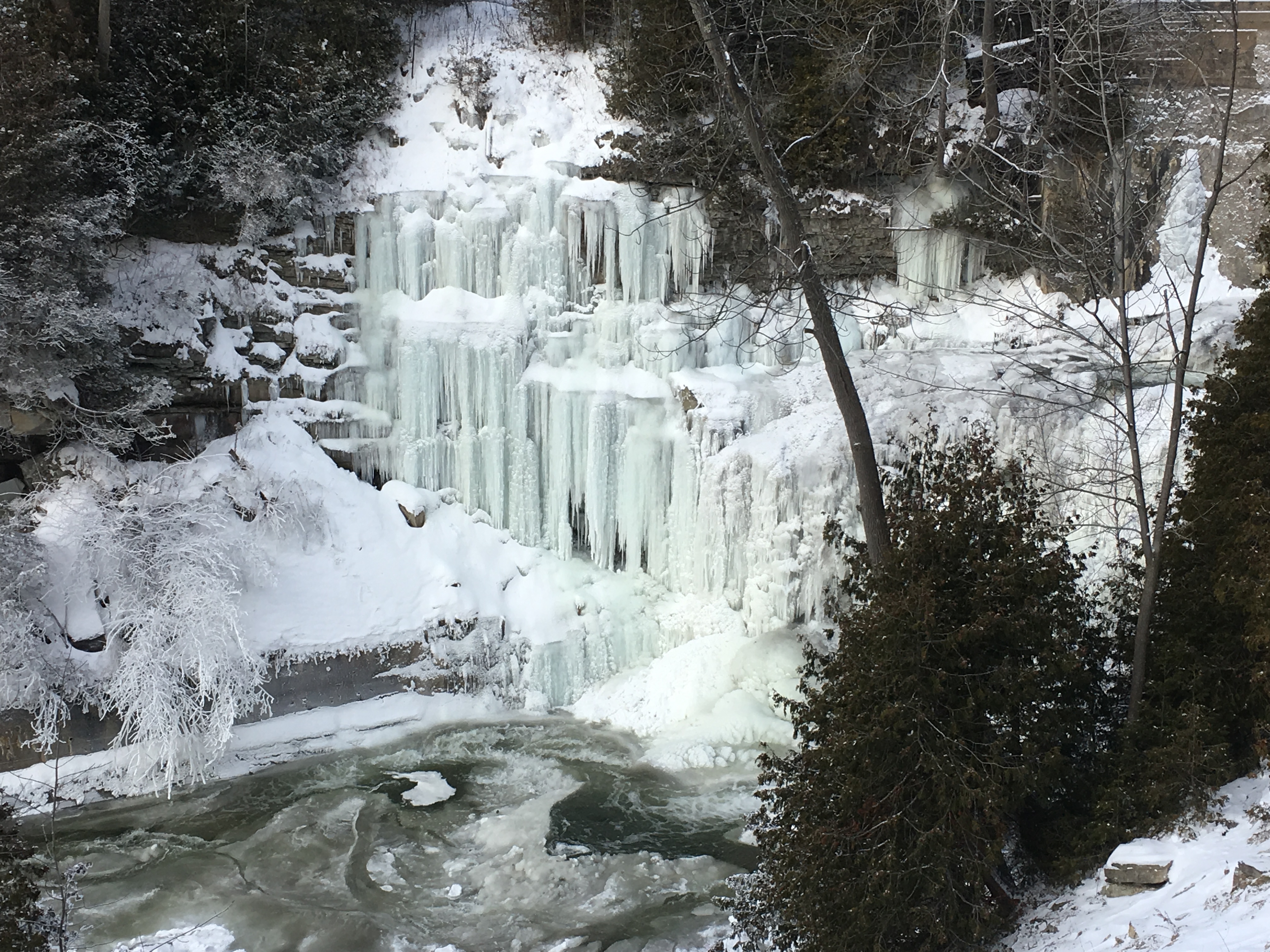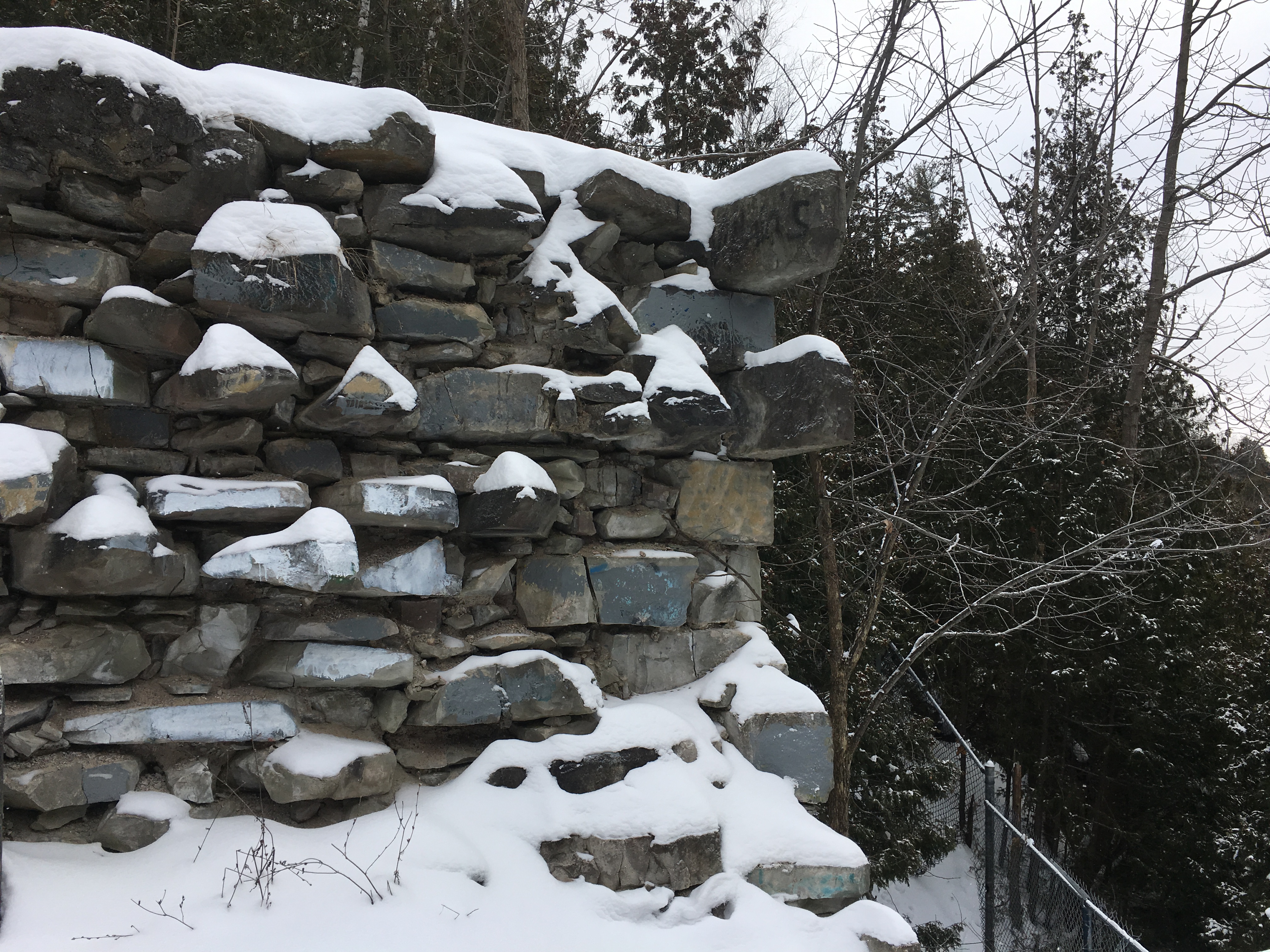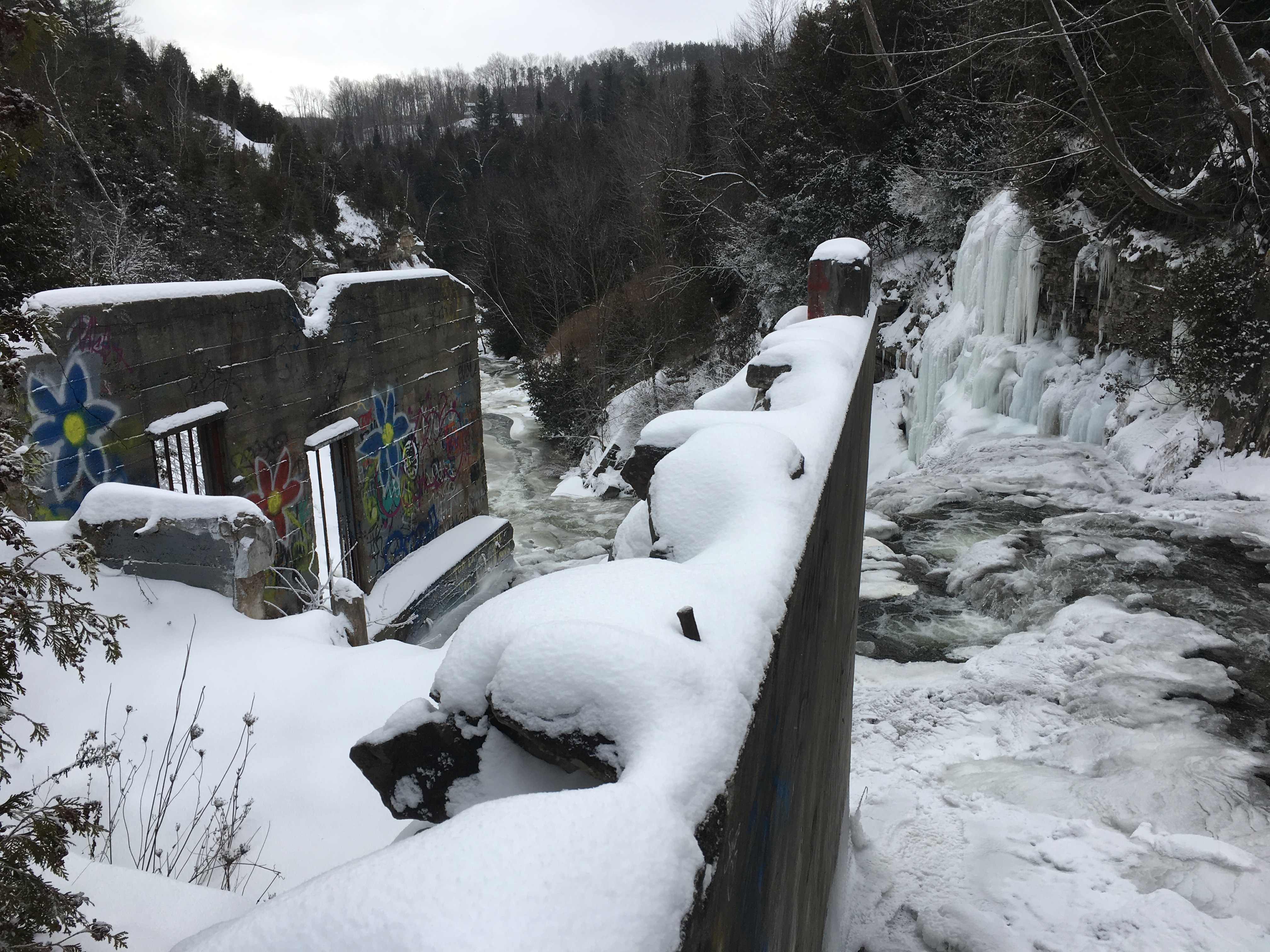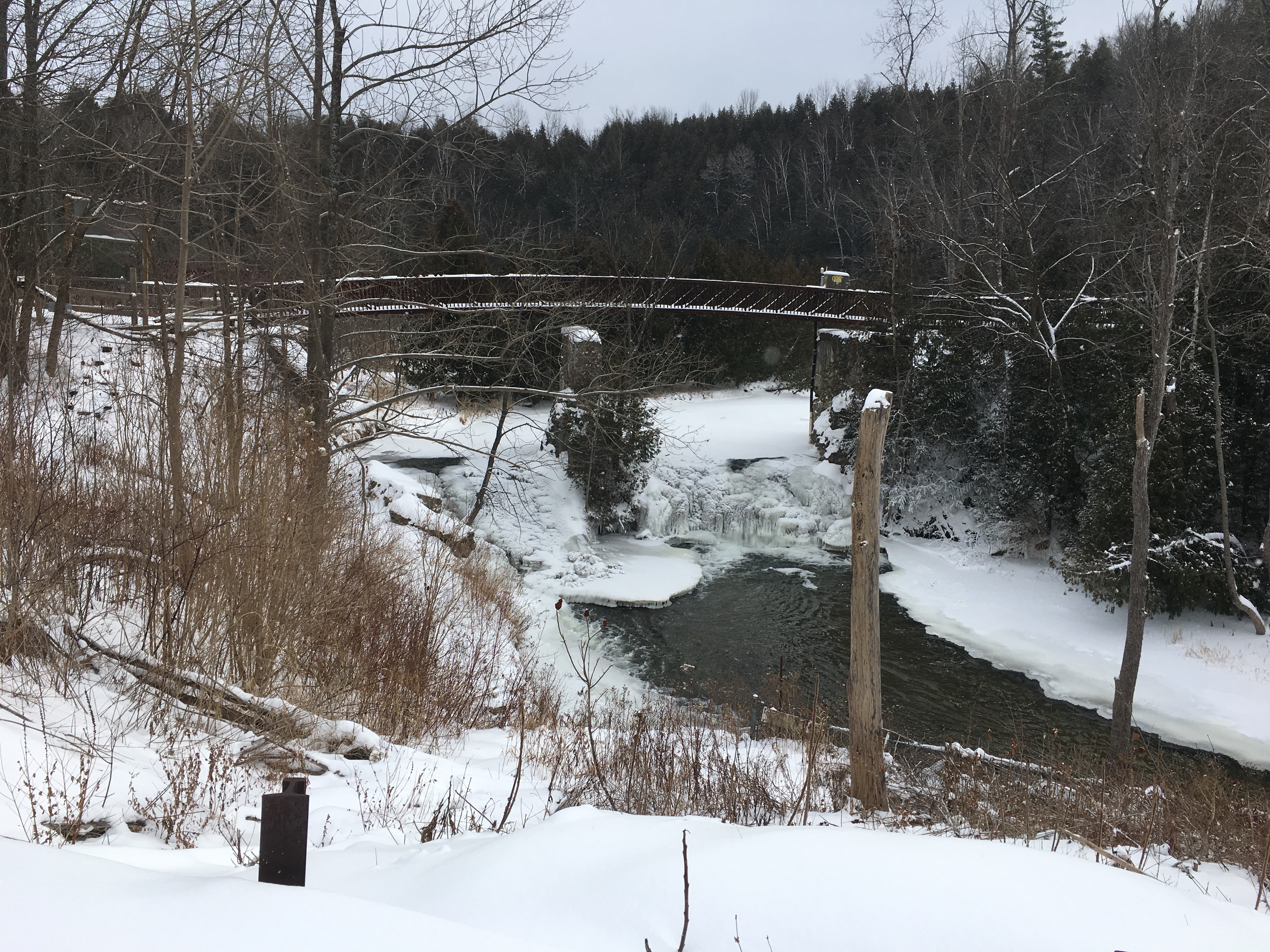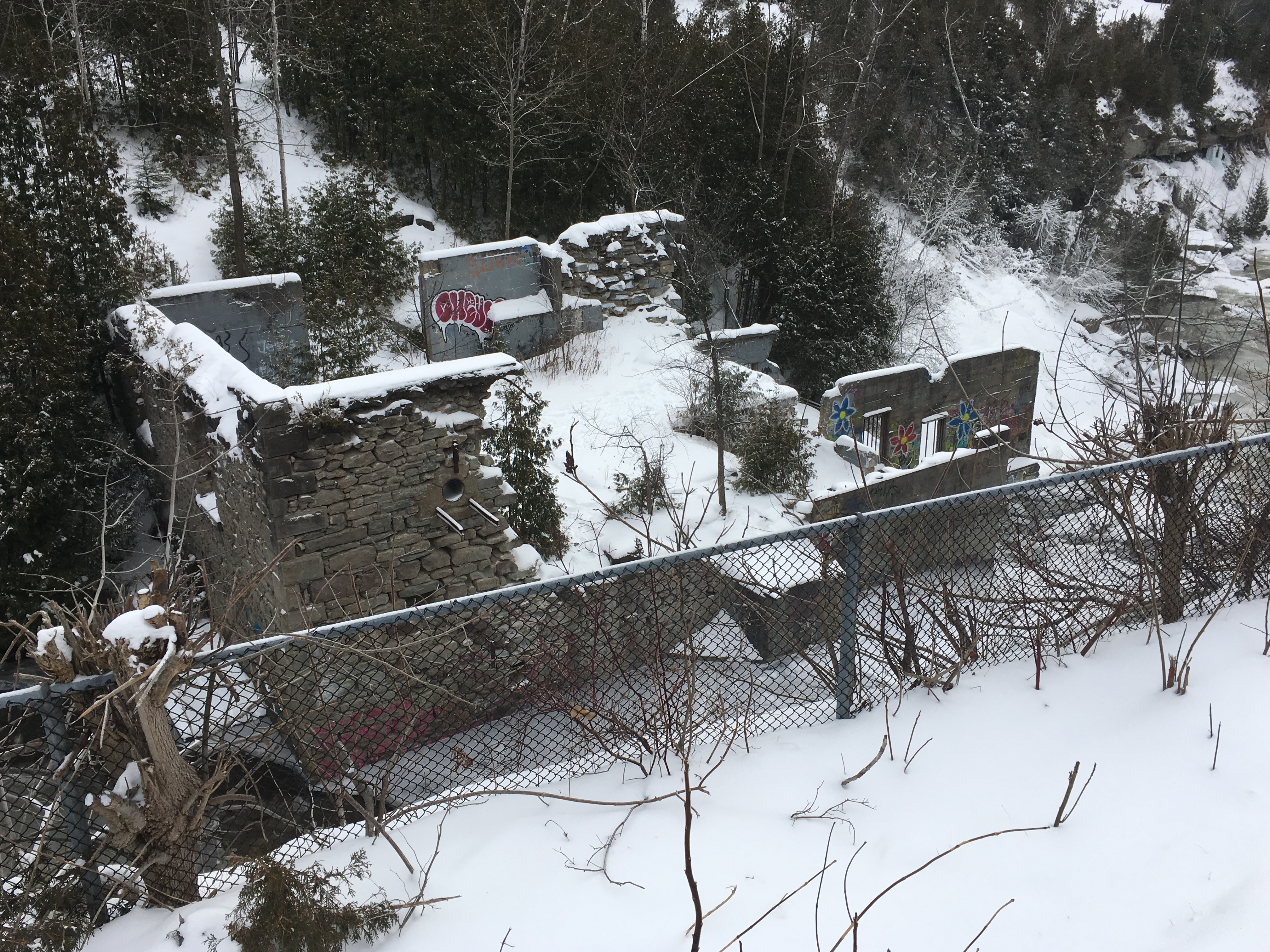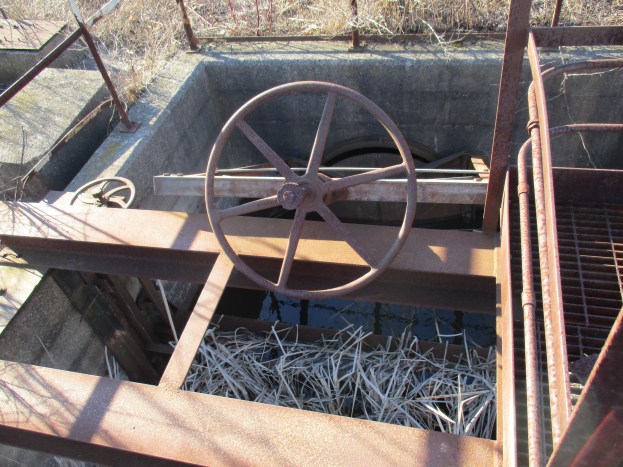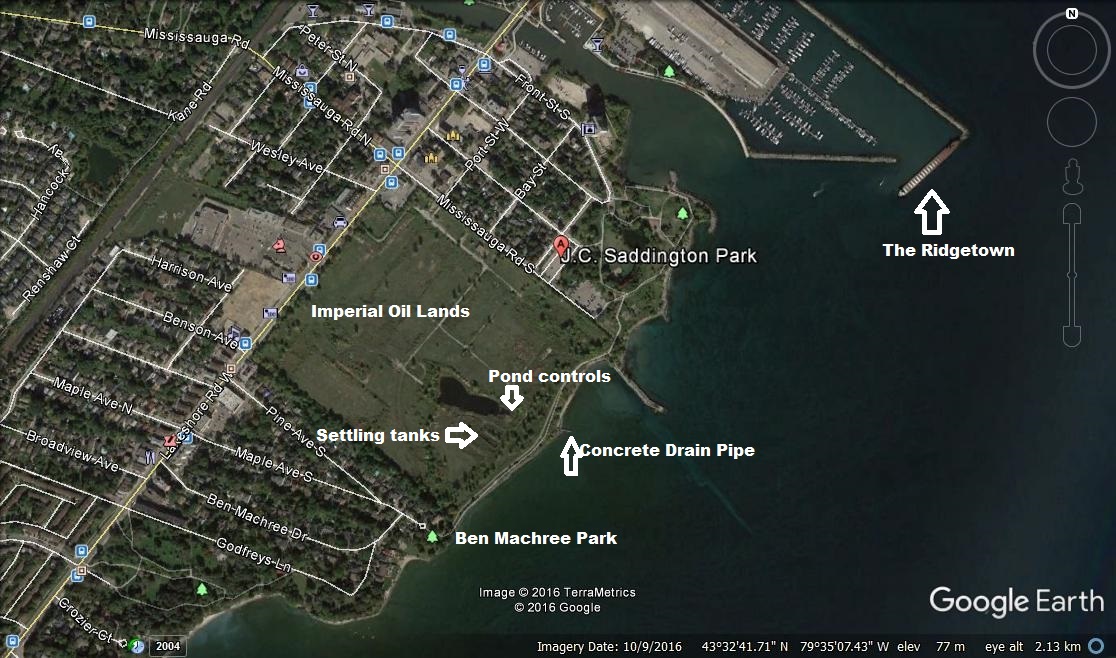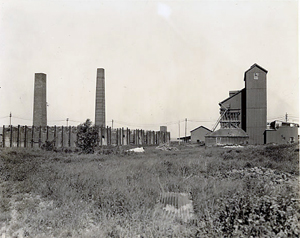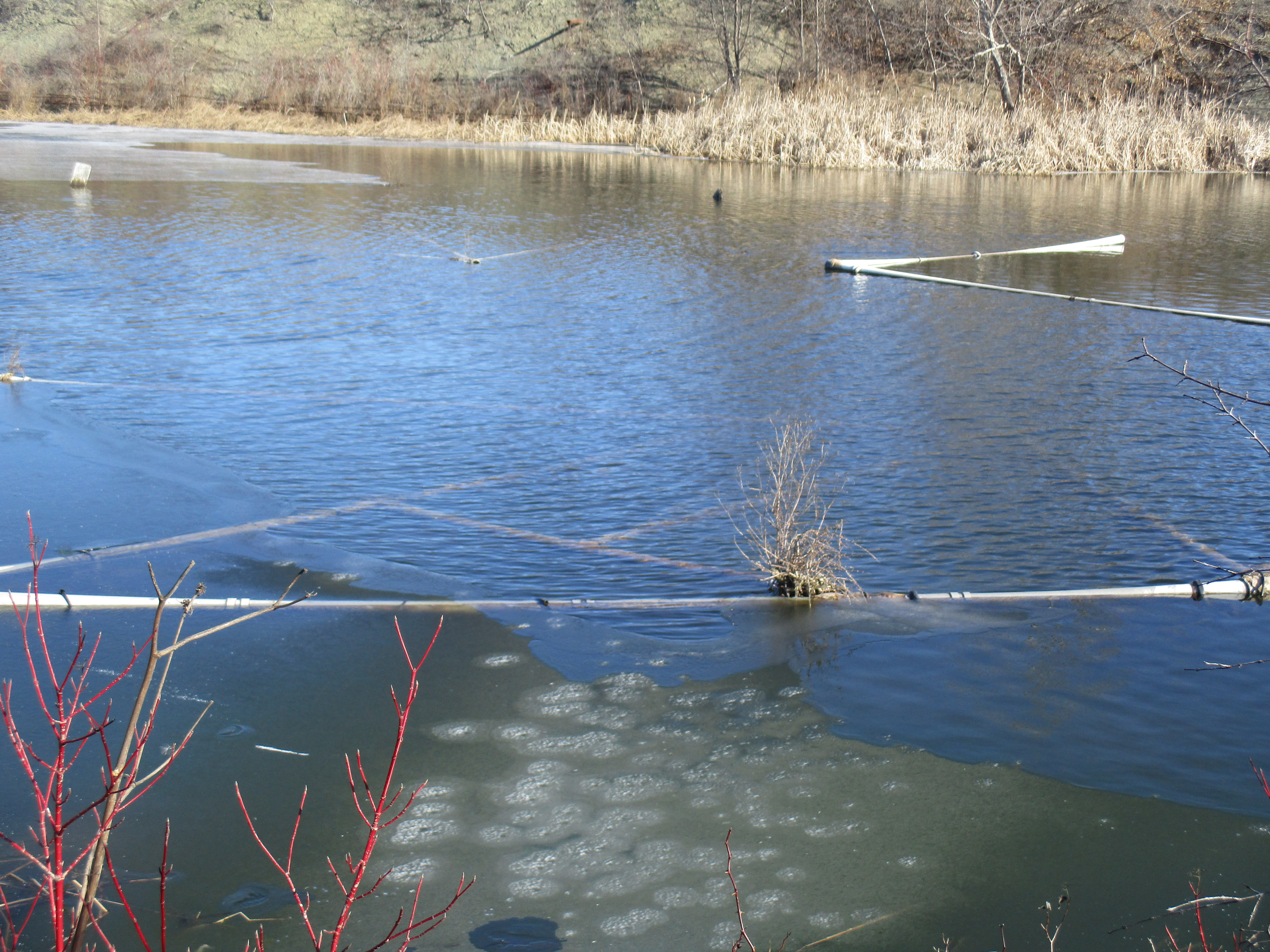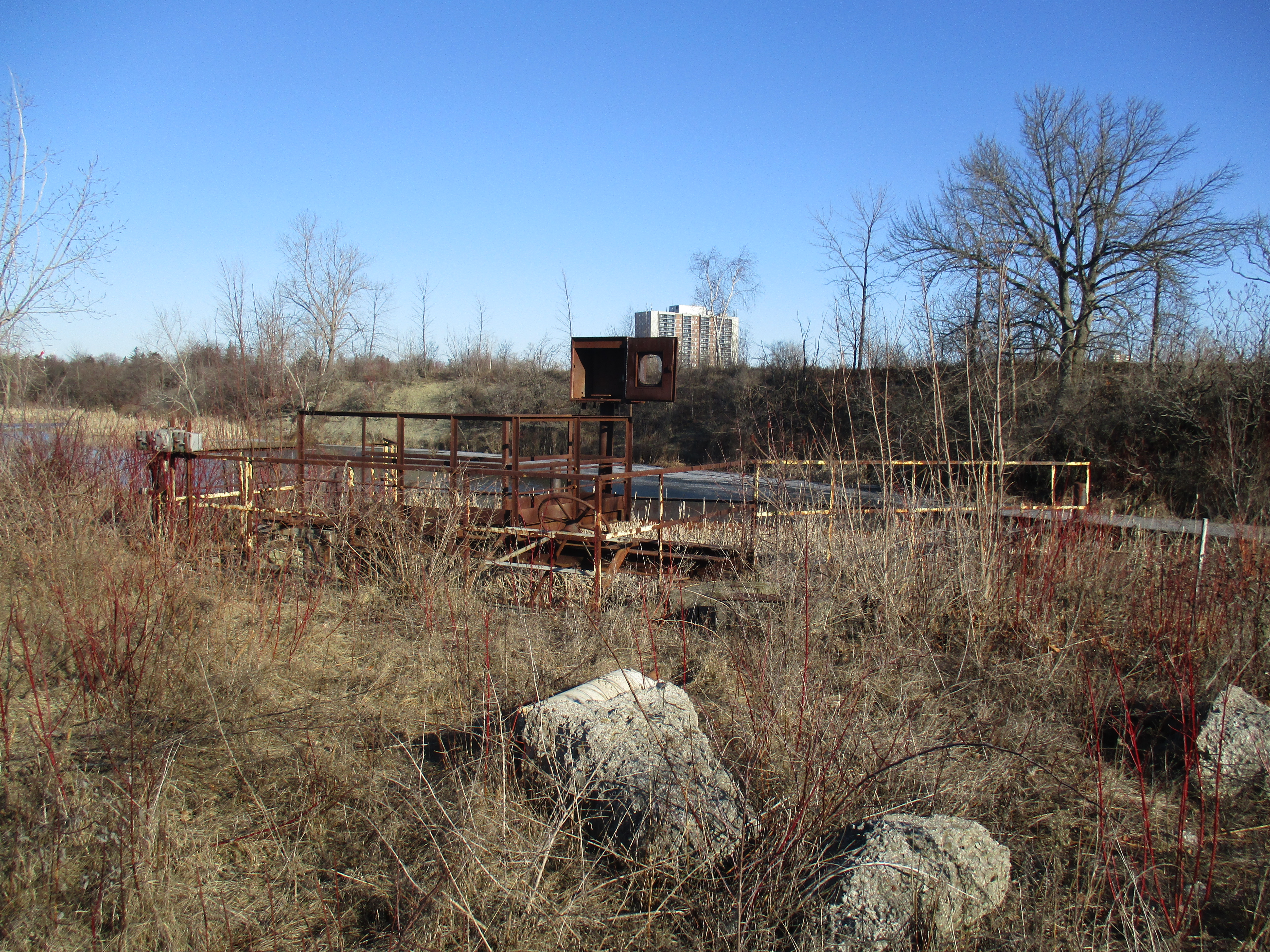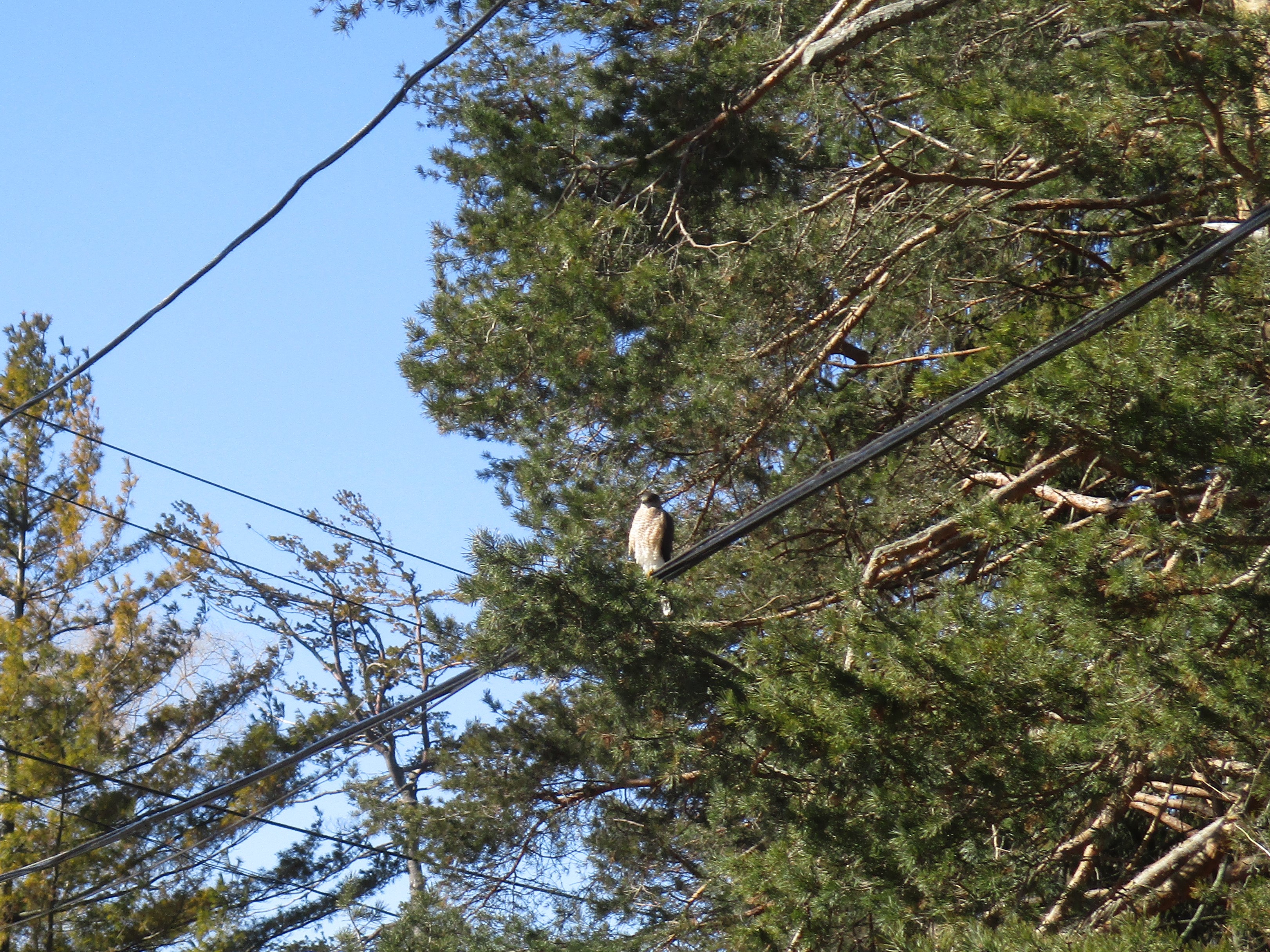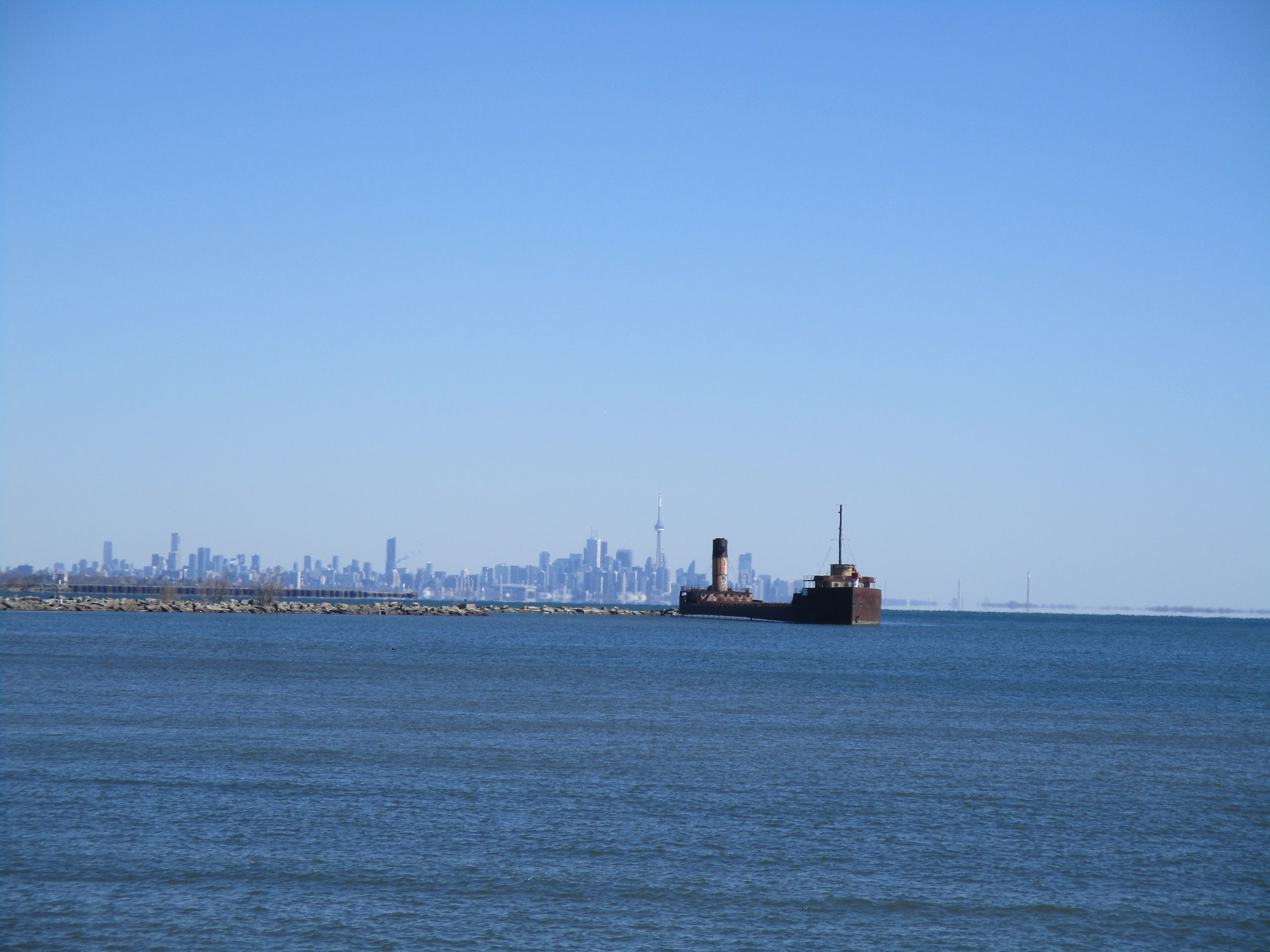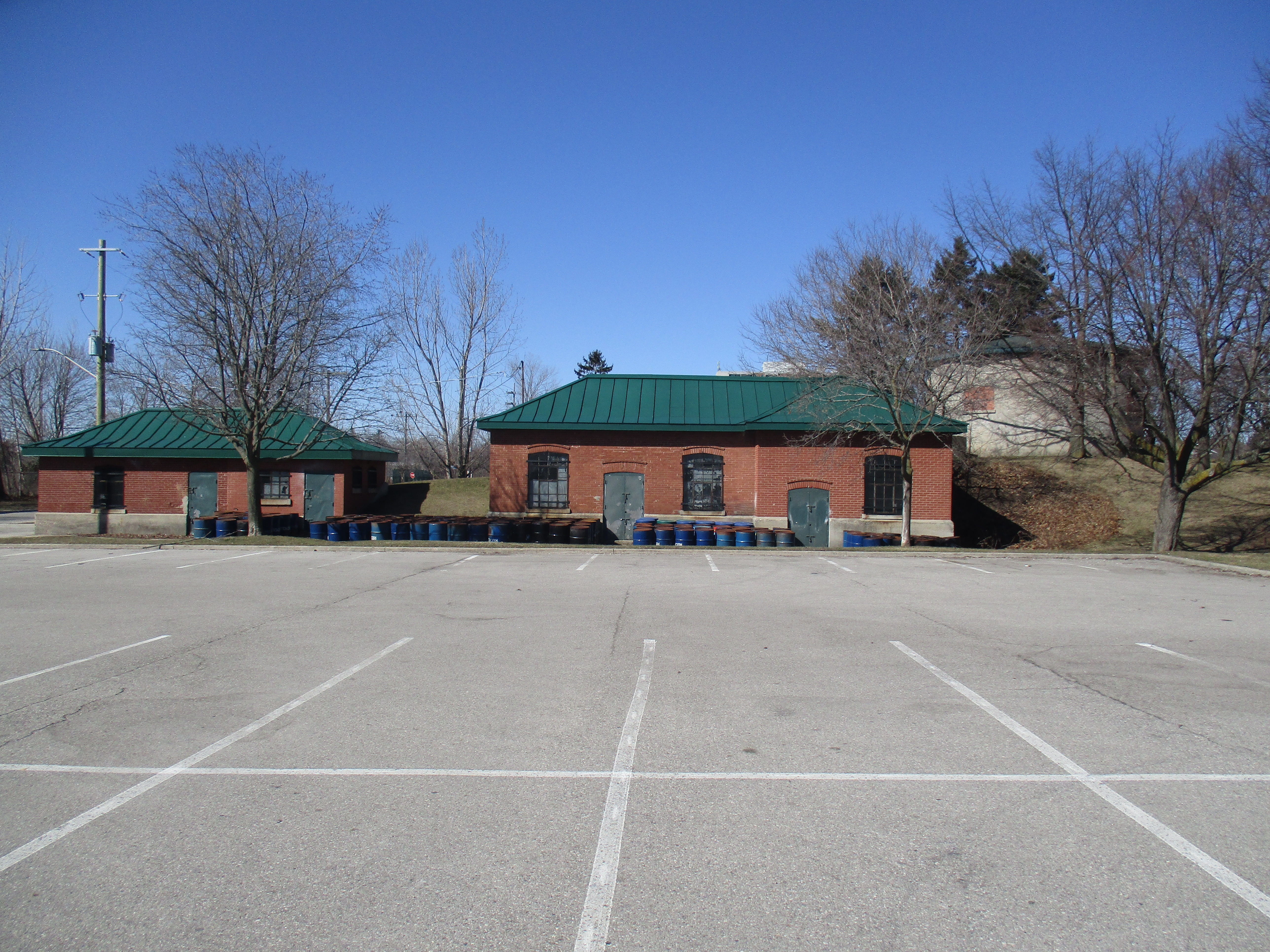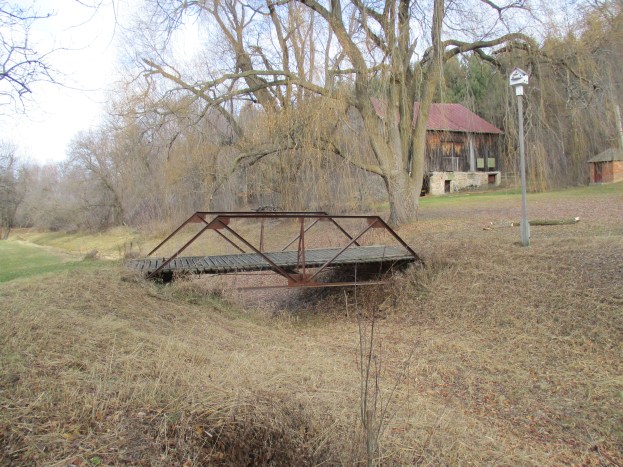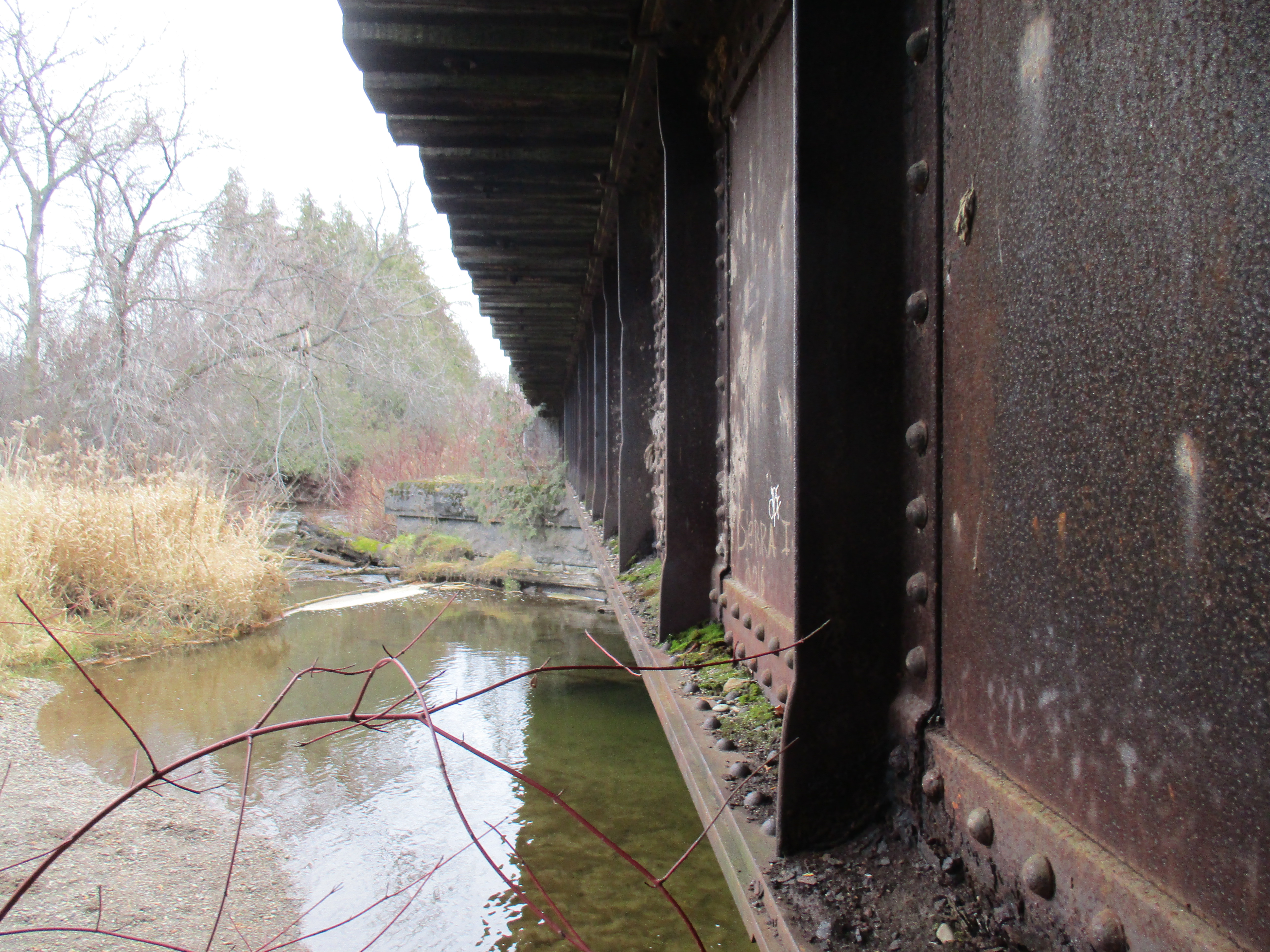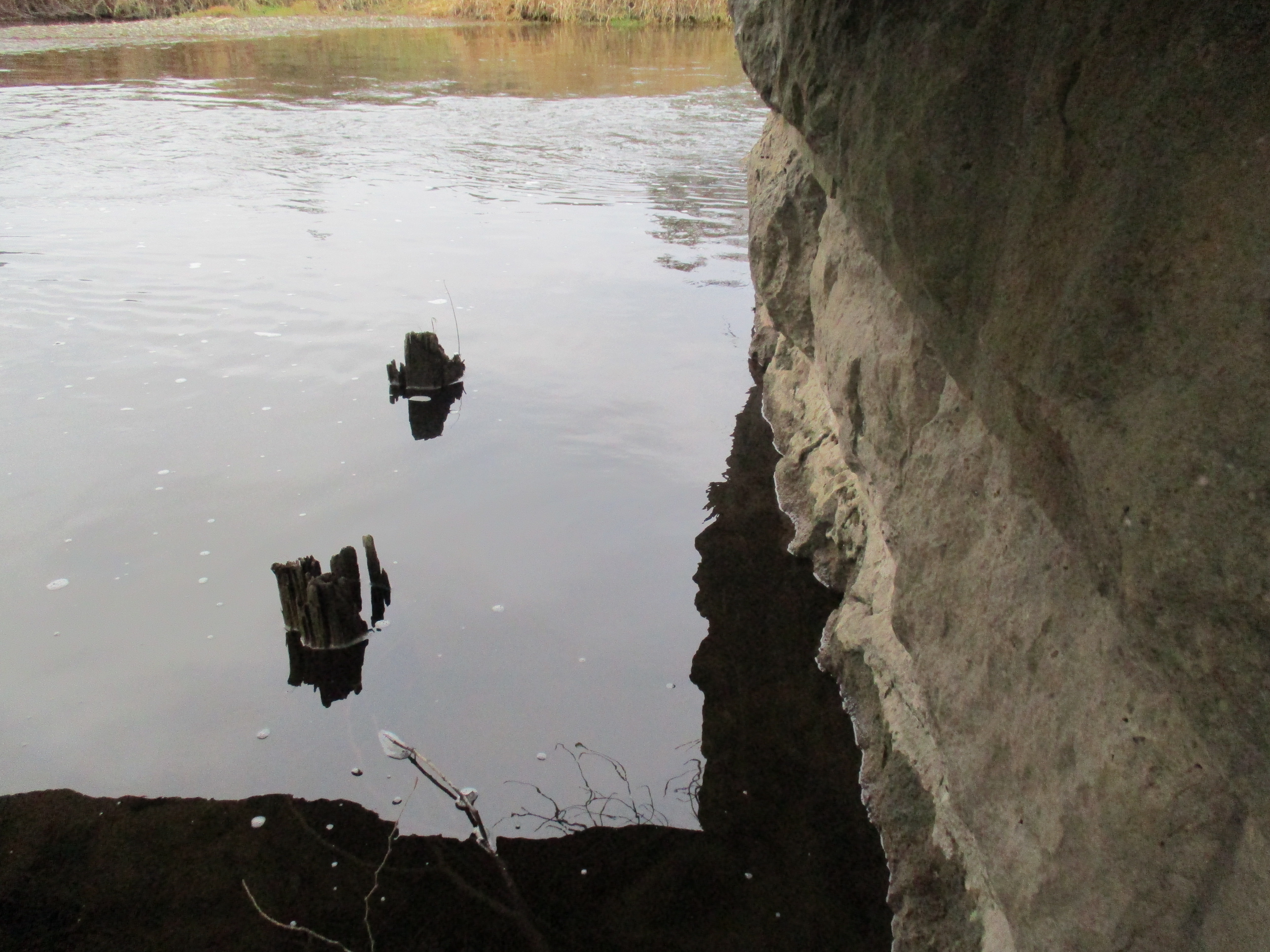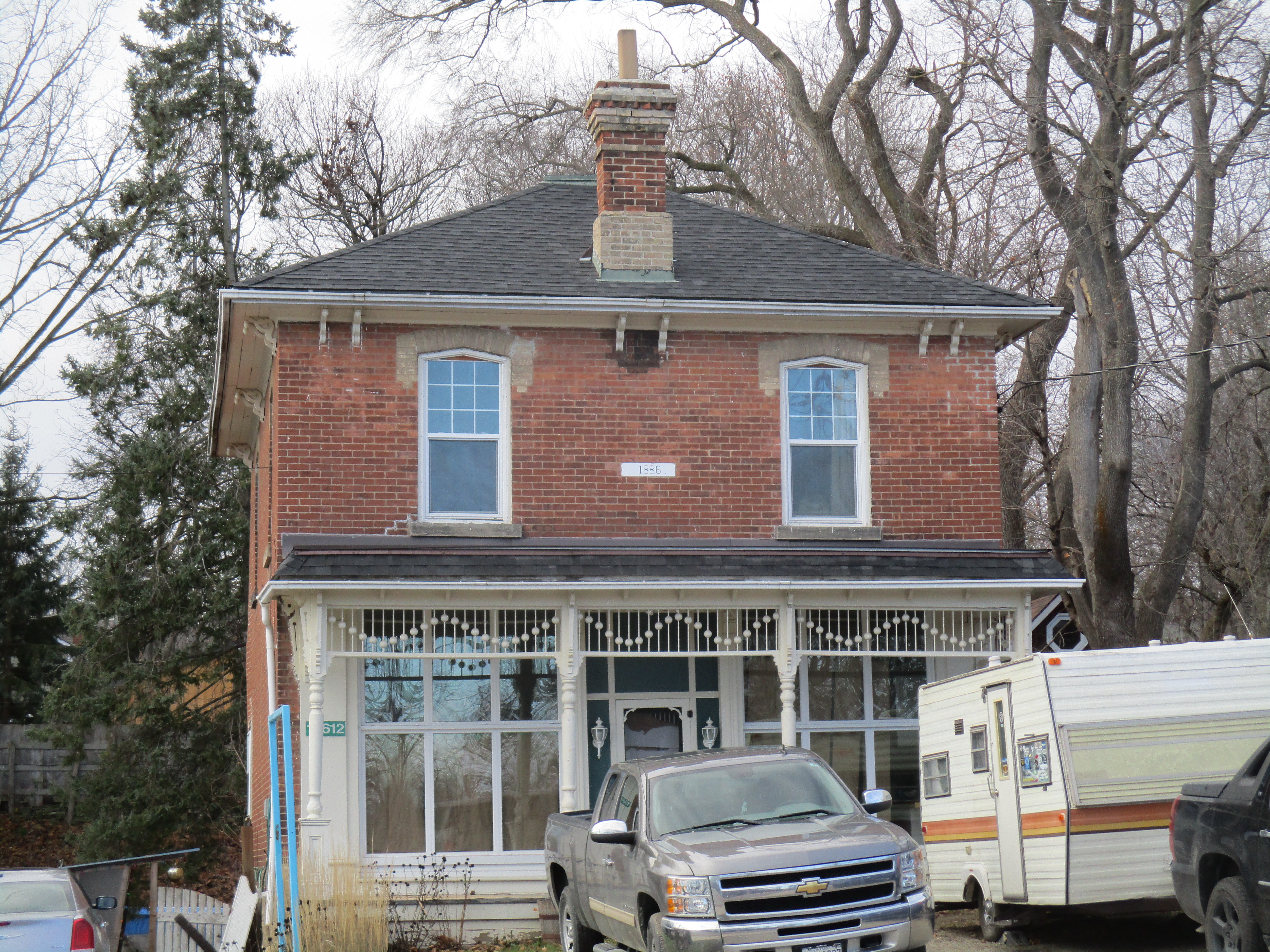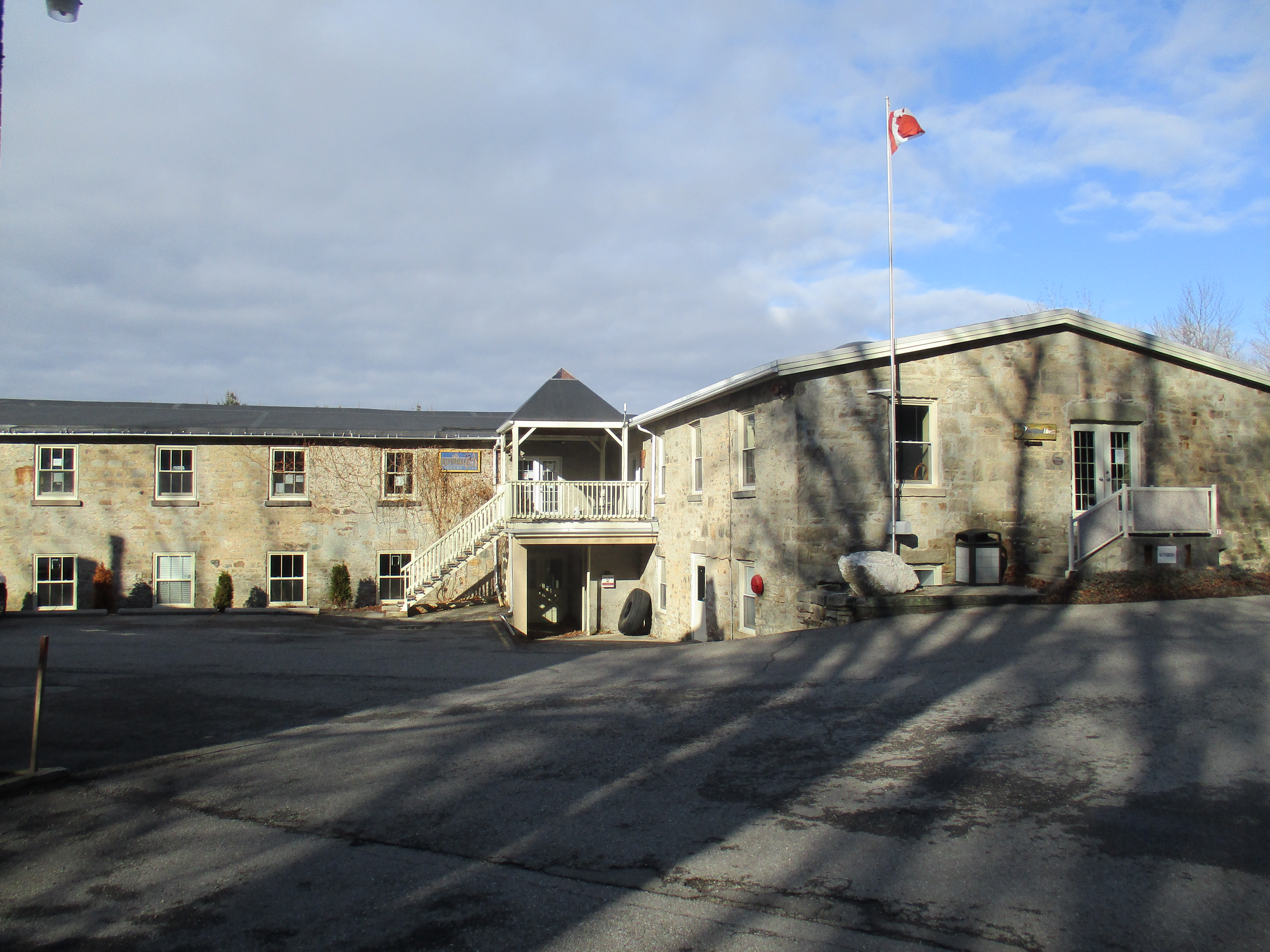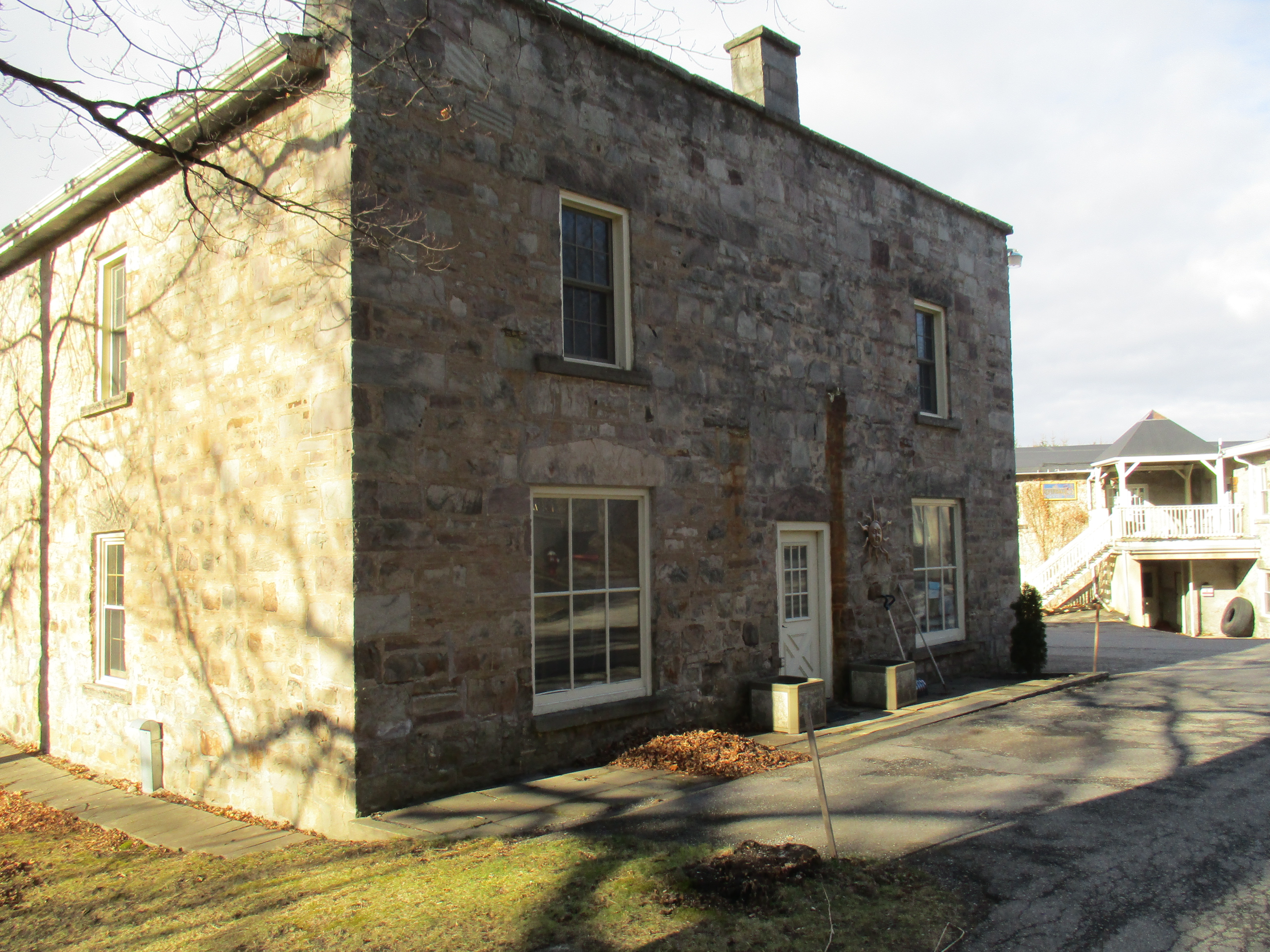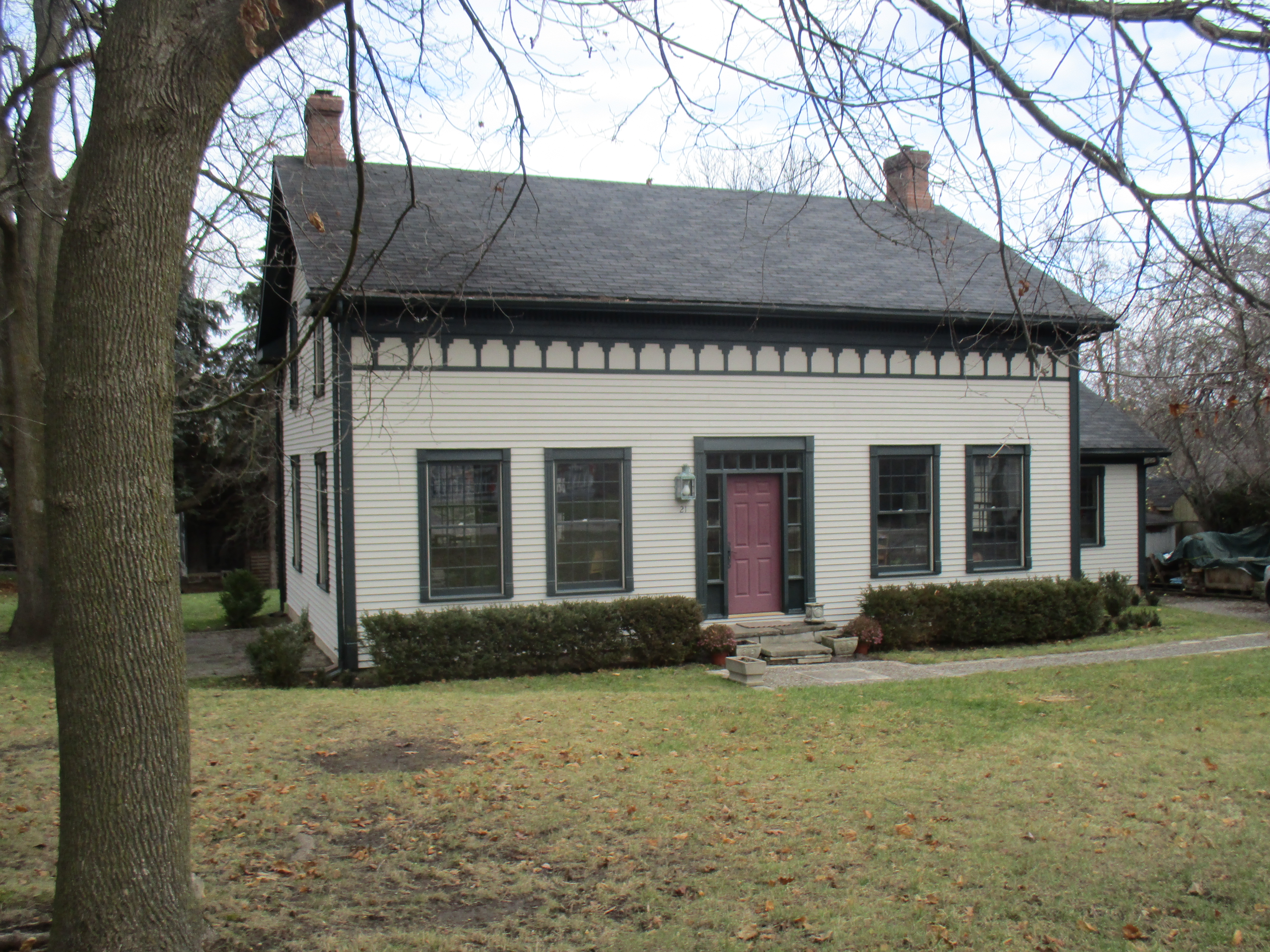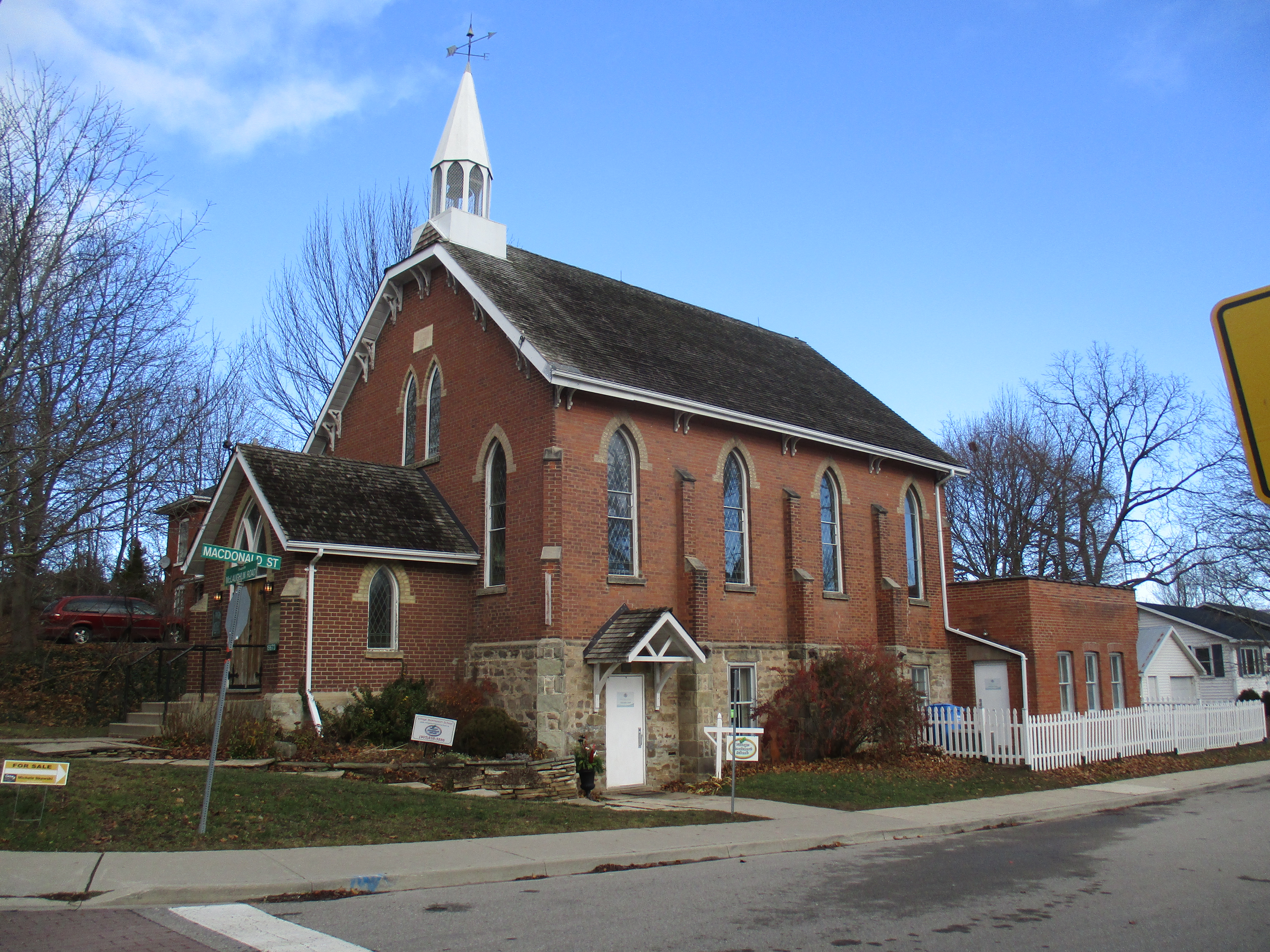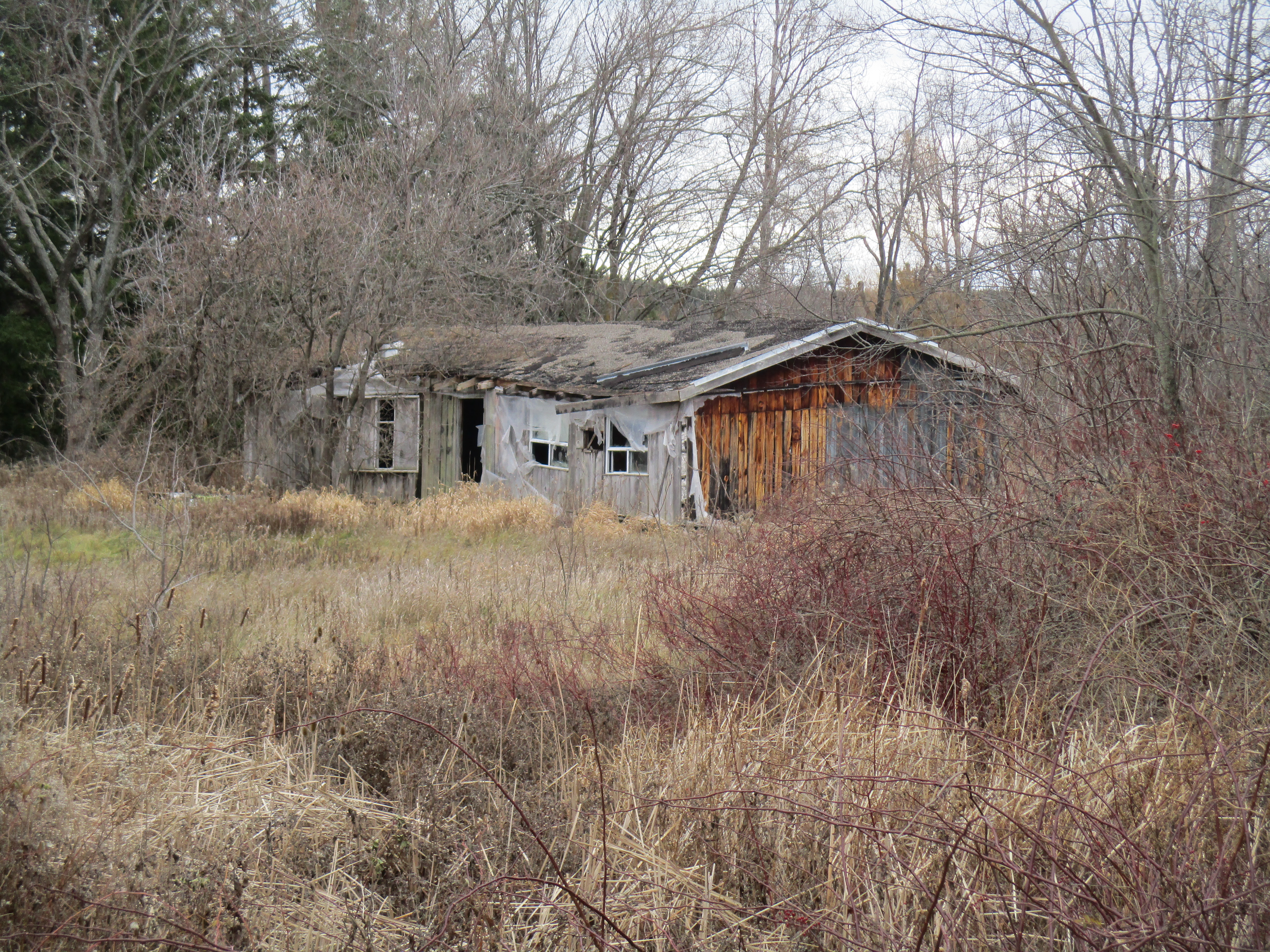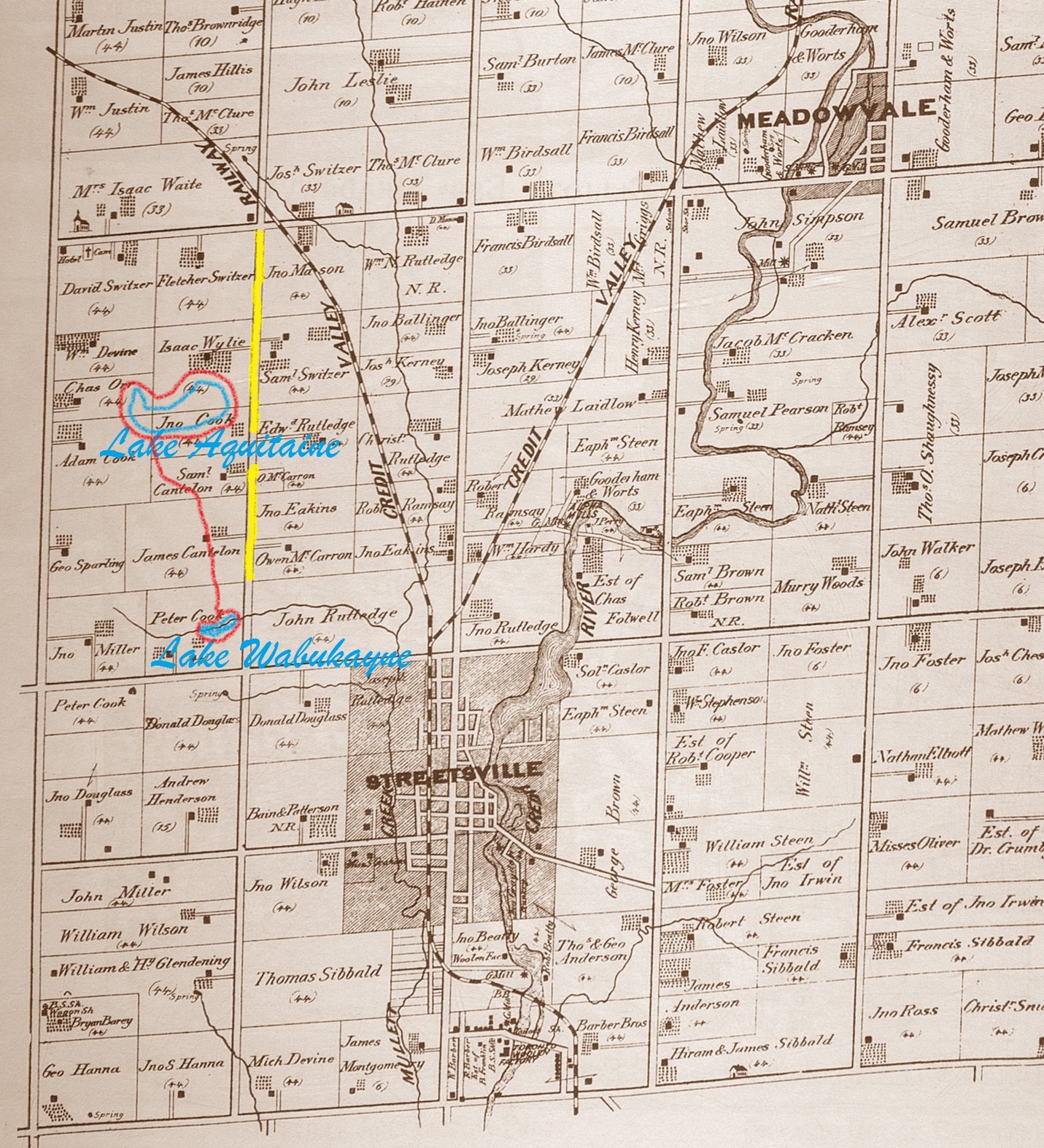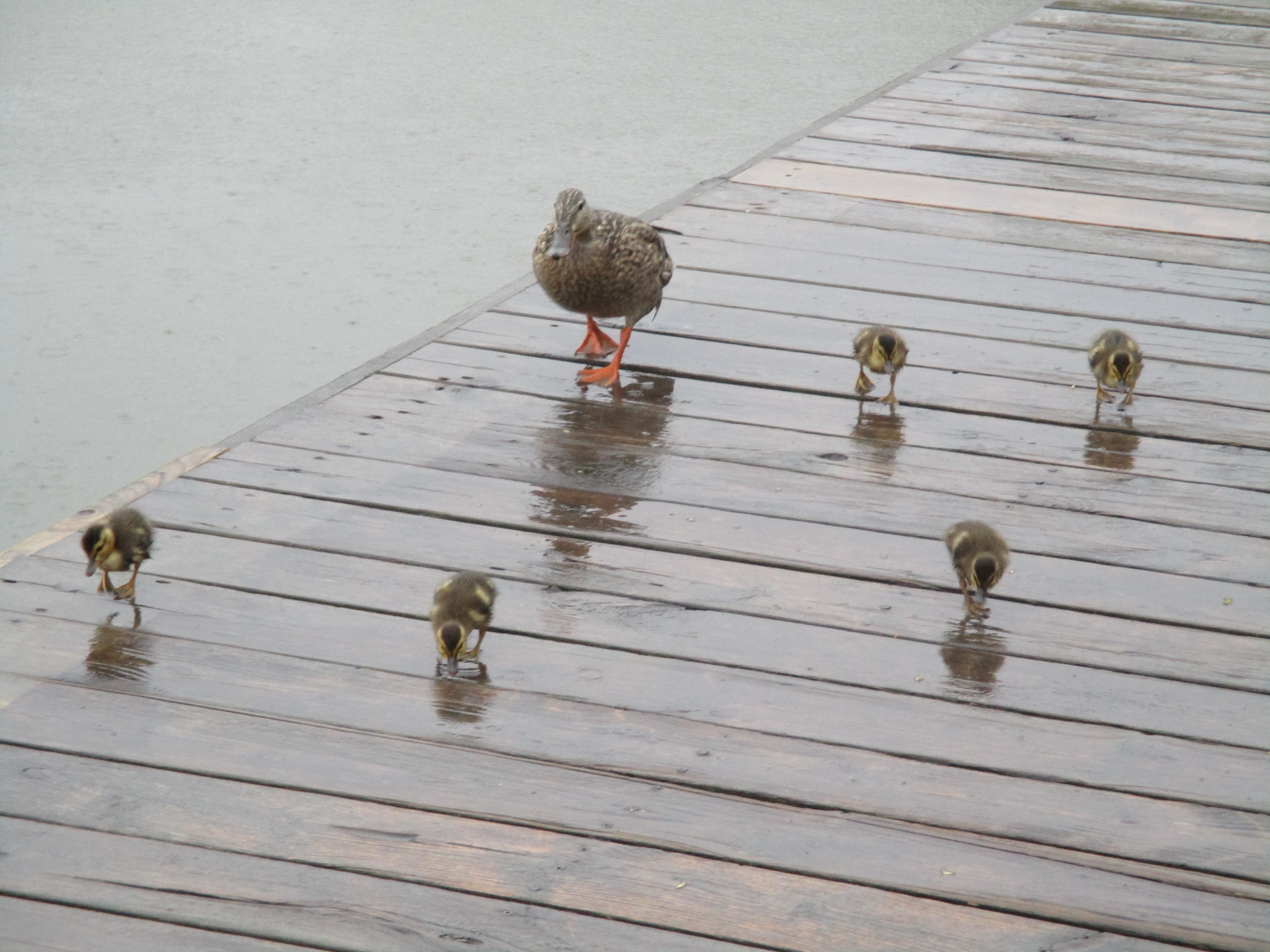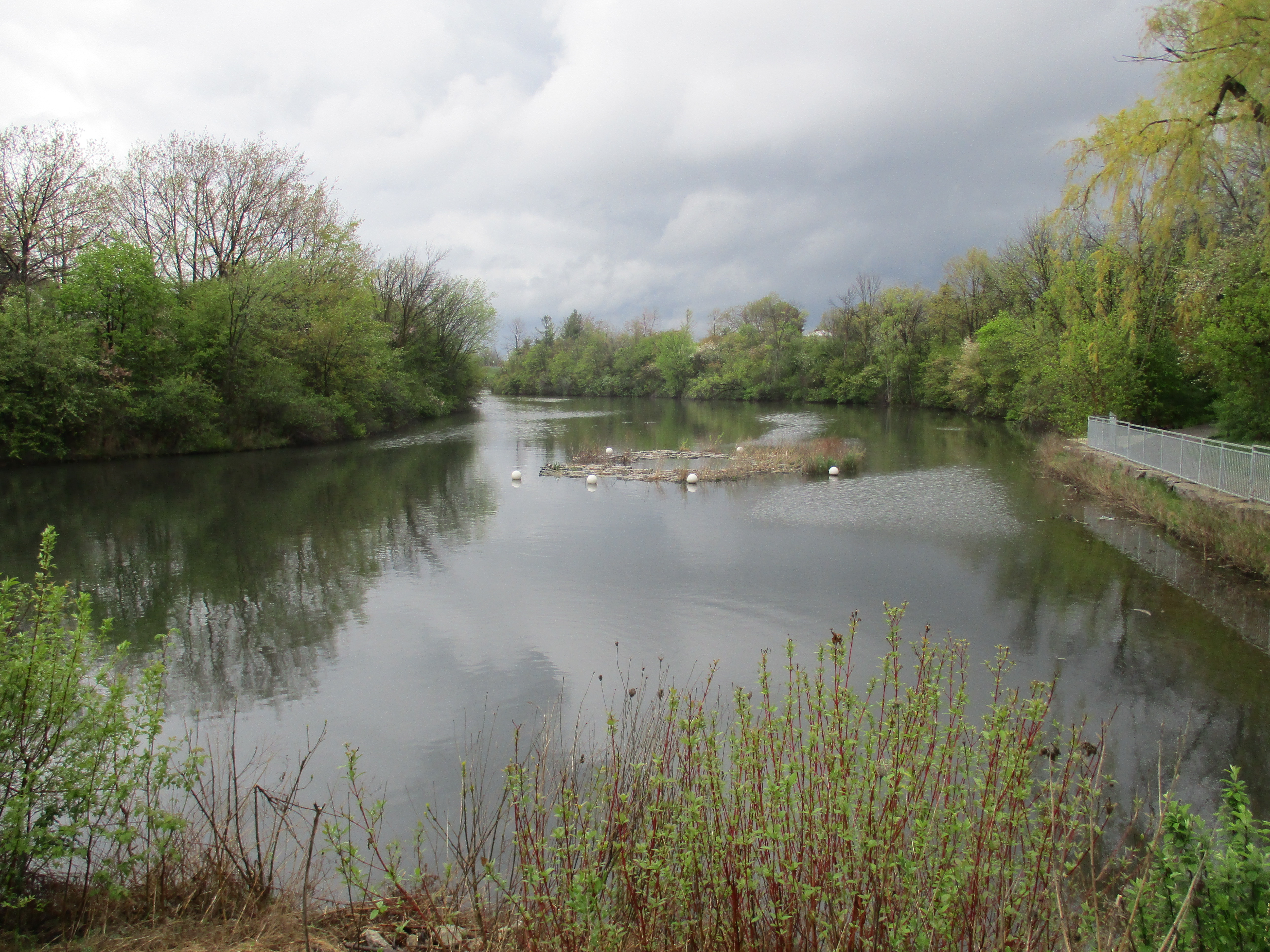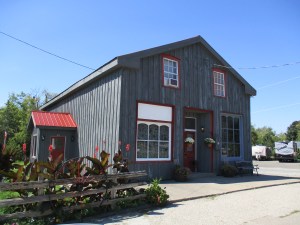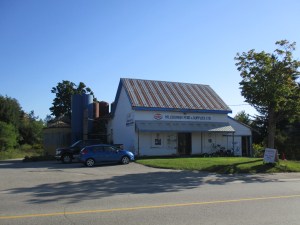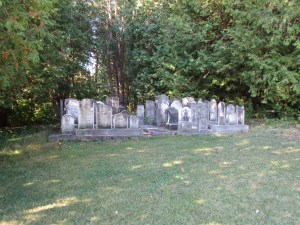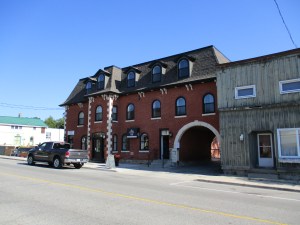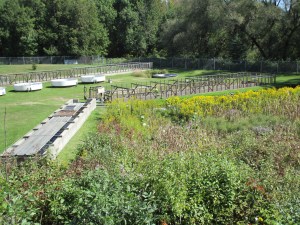Saturday, September 26, 2020
The section of the Credit River north of Georgetown is one of my favourite places to hike and I’ve returned here a few times over the past thirty years. We typically park on Maple Avenue near River Drive. Once you cross the Credit River on the bridge you can follow the Credit Valley Footpath north to Terra Cotta or south to the Barber Dynamo. This is a side trail to the Bruce Trail and is marked with blue blazes.
The first point of interest is the site of the Barber Paper Mills. These historic Victorian era industrial buildings have sat vacant for over four decades. Several proposals for redevelopment and preservation have been left unfulfilled over the years and the fate of one of Heritage Canada’s 2015 top 10 most endangered sites remains unknown.

The roof on the former paper rolling building, built in 1852, is deteriorating quickly. When we released the feature story Barber Paper Mills in June of 2015 the roof was largely intact on the river side. The side of the roof facing the road was already collapsing at that time. An updated picture was featured in March of 2018 in our story Credit Valley Footpath at which time there were two small holes in the roof on the side facing the river. Today, the roof is collapsing and at least one beam has fallen in as well. Nature is relentless.
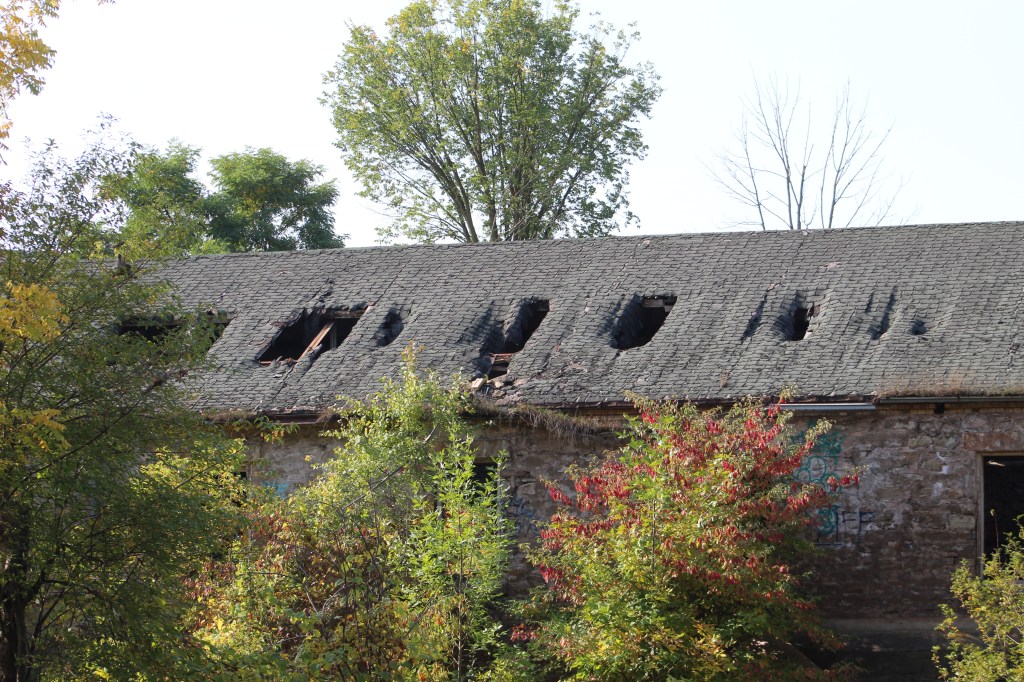
The dam that served the Barber Paper mills was replaced with a concrete one that still spans the river below the River Drive bridge. We initially followed the small trail close to the river but it doesn’t go very far past the remains of the old paper mill. You are forced to return to the formal trail and make your way into the forest that lines the sides of the ravine.

The trail follows the river and climbs the ravine three times between the road and the Barber Dynamo. There is one section that climbs a few steps and then follows the root system of the trees along the edge of the ravine. That part of the trail could be challenging in wet or snowy conditions.
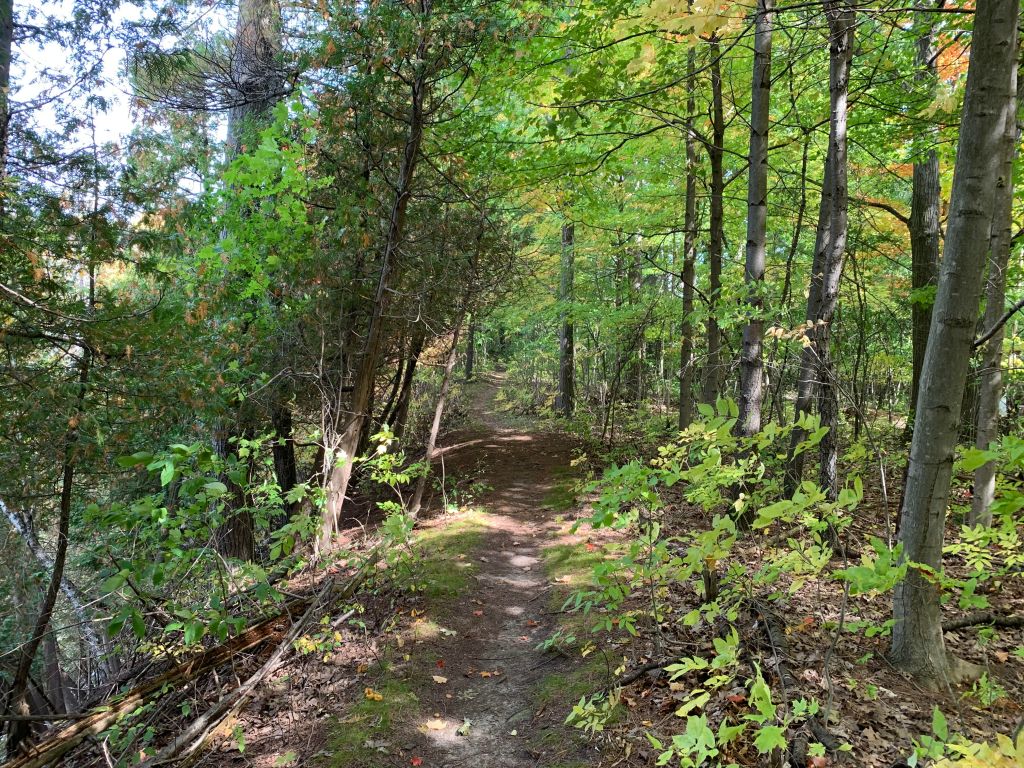
The DeKay’s Snake is also known simply as a Brown Snake and has two distinct rows of black black spots running down each side of the back. With the colder weather coming on we may not see anymore snakes this year, but we’re always watching. I should have been watching a little closer because I almost stepped on this one before it slithered off the trail.
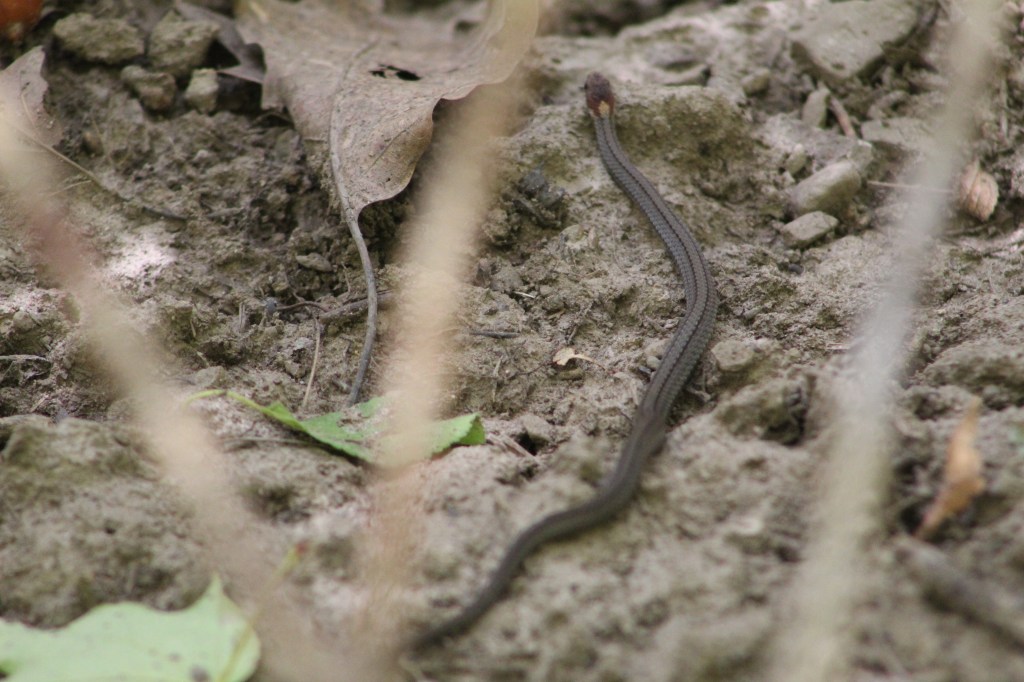
The Common Earthball is also known as Pigskin Poison Puffball. However, unlike other puffballs, earthballs do not have a single opening at the top but rather split open to release their spores.

The Grand Trunk Railway Bridge was built in 1855 and earned the nick-name the Iron Bridge. It crosses the 2000 foot wide river valley using 8 spans of 96 feet each and extensive berms on either side. The bridge rises 115 feet above the river. It was expanded in 2010 to accommodate a double track as part of GO Transit’s expansion of services. Provision has been made for a third track in the future.

Part of the trail runs through a forest of red oak trees. The weight of nuts or fruit in a forest is known as its “mast” and this year would be known as a big mast year because of the high volume of acorns produced. To have a big mast requires three factors, the first of which is sufficient rain in the fall to prepare the tree for a good spring flowering. Secondly, there can’t be a frost during the week that the female flowers are open in the spring. Lastly, once the acorns are growing they need to avoid summer droughts that can cause fungal problems. The acorns were dropping almost continually in the forest as we passed through, making it the first time we had to hike in acorn rain.
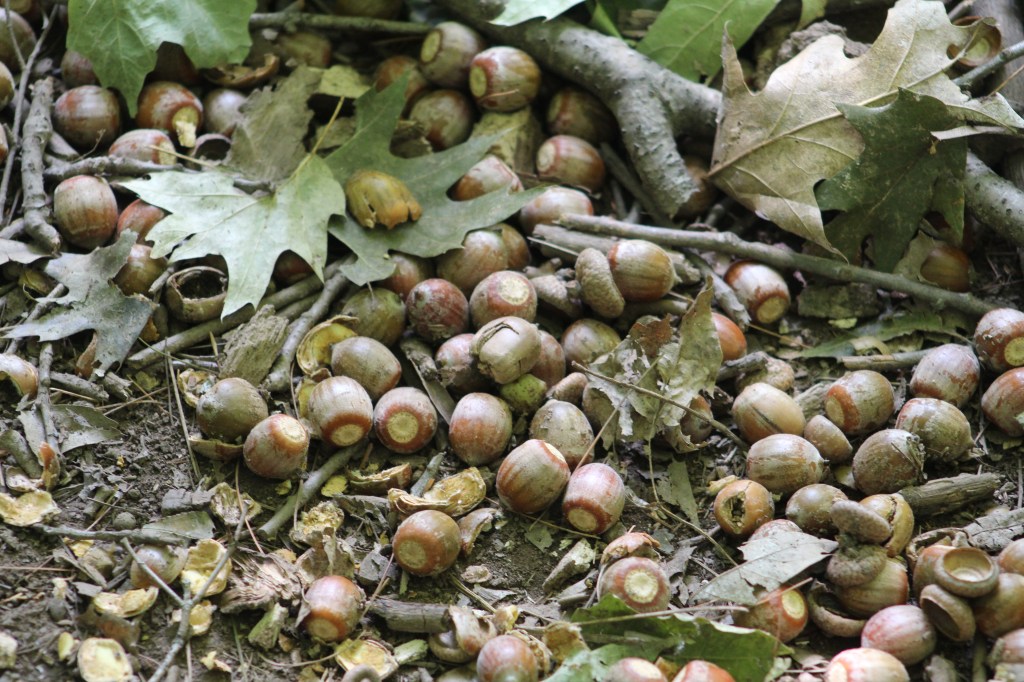
Positive identification of mushrooms can be difficult sometimes and these bright yellow mushrooms were not featured in my field guide or clearly singled out on line. The scales on the caps may indicate that they are poisonous. We don’t harvest mushrooms on our hikes, and recommend you don’t either, so it doesn’t make a whole lot of difference if they are edible or not.

The Barber Dynamo is one of our favourite places to visit in the GTA and we have previously told the story of the building. Each time we take a new set of pictures there is some level of deterioration in the old stone building. Unfortunately it looks like we will eventually lose what remains of the first electrical generating plant to transmit power over wires for the operation of a mill. More details can be found in our feature story on the history of the Barber Dynamo.

The walls are starting to sag in various places and will collapse if steps are not taken to support them, perhaps in a manner similar to the work being done at Goldie Mill in Guelph.

Wolf’s Milk Slime is also known as Toothpaste Slime because of the consistency it has when it first comes out. If the balls are punctured before the spores are ready they will ooze a pink slime. Wolf’s Milk Slime grows between June and November on well rotted logs.

The Credit Valley Footpath continues out to the Tenth Line which could provide a less strenuous hike should you wish to visit the Dynamo. Perhaps we’ll use that end of the trail in the future as we continue to keep an eye on this heritage site over the coming years.
Google Maps Link : Barber Paper Mill
Like us at http://www.facebook.com/hikingthegta
Follow us at http://www.hikingthegta.com
Also look for us on Instagram



